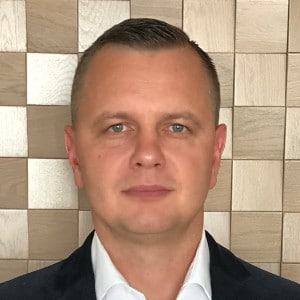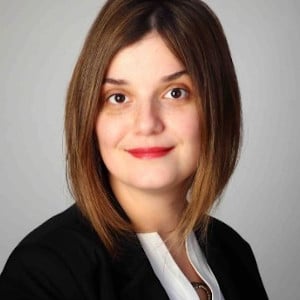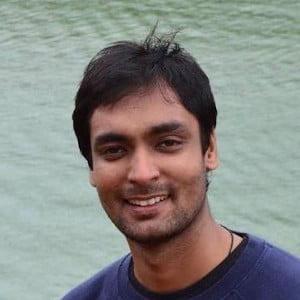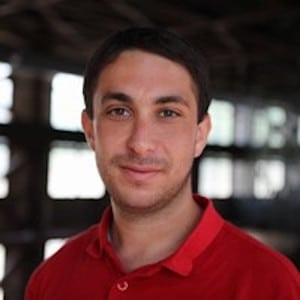Speakers 2019
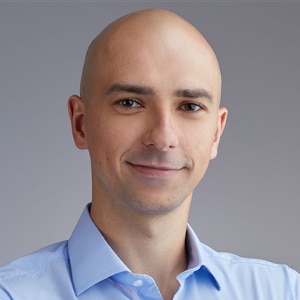
Martin Tsarev
Zühlke Engineering
Martin Tsarev
Martin is a graduate in Computer Science from the Technical University Darmstadt, Germany. He has been working in Germany as an embedded software engineer and has been developing mainly safety-critical low-level software in C/C++ and IoT systems. Martin is currently leading enterprise software projects at Zuhlke Engineering Bulgaria.
Prototyping platforms for any IoT use case
Internet of Things is becoming the heart of more and more projects. Each IoT project starts with a PoC prototype. This workshop will walk you through what a prototyping platform is and how it impacts the development of a project. Using the Bosch XDK, we will go through what such a board offers as sensors, connectivity, functionality and extensions and interesting examples from the real world. Bosch and Zuhlke developed the platform to encourage community development and open source coding thus we will see some live coding on the stop.
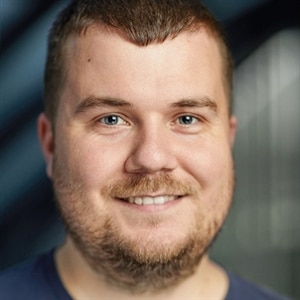
Dimitar Krastev
Zühlke Engineering
Dimitar Krastev
Dimitar Krastev is currently Expert Software Engineer at Zühlke Engineering. Before joining Zühlke, he was Senior Software Developer at VMware where he was involved as a consultant in various cloud projects, including leading telecommunication providers in Europe. During that period Dimitar was in several high-profile project requiring special customer focus. Alongside being full stack developer, he is specifically focused on customer facing workshops, escalation management and consulting.
You are a consultant, you just don’t know it yet
In this fast changing world and the adoption of Agile processes, the customer exposure of the developers is increasing. This introduces a demand for new set of skills. Developers are expected to communicate and collaborate with the customer closely. This creates a new set of challenges every developer will face. Soft skills are now becoming a common asset for every developer.
Prototyping platforms for any IoT use case
Internet of Things is becoming the heart of more and more projects. Each IoT project starts with a PoC prototype. This workshop will walk you through what a prototyping platform is and how it impacts the development of a project. Using the Bosch XDK, we will go through what such a board offers as sensors, connectivity, functionality and extensions and interesting examples from the real world. Bosch and Zuhlke developed the platform to encourage community development and open source coding thus we will see some live coding on the stop.

Yordanka Fandakova
Mayor of Sofia
Yordanka Fandakova
Yordanka Fandakova is Mayor of Sofia since 2009.
Her previous positions include elected Member of Parliament in 2009, Minister of Education, Youth and Science of the Republic of Bulgaria in 2009, Sofia Deputy Mayor for Culture, education and Sports in 2007-2009. Prior to that she gained rich 20-year experience in the area of education as a teacher and as a school principle of Vladislav Gramatik Secondary Comprehensive School with Foreign Language Teaching in Sofia.
Mrs. Fandakova holds MA in Russian Philology from Sofia University and Pushkin Institute in Moscow. She has acquired vast additional qualifications in the spheres of management of education, business administration, political management. She speaks Russian and English.
Mrs. Fandakova’s priorities and achievements during her mandates as Mayor of Sofia include fast development of city infrastructure, free and fast internet coverage in public spaces, environment, education, better conditions for doing business in Sofia. During her term in office Sofia became one of the 30 fastest developing cities in the world and the European capital city with the biggest GDP growth in the last 10 years.
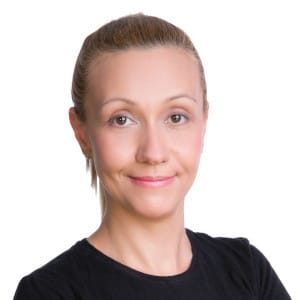
Iva Abadjieva
CEO Innovation Center Inc.
Iva Abadjieva

Vessela Kalacheva
CEO Bulgarian Association for Information Technology
Vessela Kalacheva
Vessela Kalacheva is a CEO of the Bulgarian Association for Information Technology /BAIT/. She has graduated from a Mathematics High School, then the Faculty of Communication Technology at the Technical University, Sofia. She holds a Master’s degree in Communication and Security Engineering and Systems. She also holds a Master’s Degree in Mass Communication Management from the New Bulgarian University (NBU). Her professional experience includes Director of the NBU Information Division, Director of BAIT’s Communications. She has been a national coordinator of three consecutive e-Skills for jobs campaigns /2012, 2014, 2015-2016/ as for the campaign in 2012 she was awarded with DIGITALEUROPE’s Special Contribution Award for the highest achievements results from a total of 23 national IT associations involved in the European project. She has been also a national coordinator of Watify’s European project for promoting digital entrepreneurship and leaded establishment of the National Technology Transfer Office at BAIT. She is a member of the jury of the President of the Republic of Bulgaria Awards, named after John Atanassov. Vessela is also a member of the juries of the BAIT’s Awards and the Innovation Academy for the Bulgaria Innovation Hackathon.
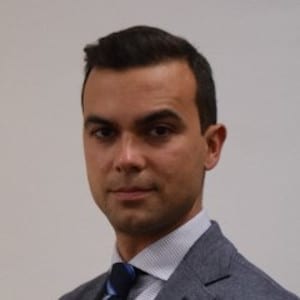
Boyko Takov
Executive Directory BSMEPA
Boyko Takov
Dr. Boyko Takov is Executive Director of The Bulgarian Small and Medium Enterprises Promotion Agency, appointed by an Order of the Minister of Economy, Mr. Emil Karanikolov, dated November 12, 2018.
Dr. Takov has a proven executive management track record and over 12 years of experience in business management. He spent four years at The Executive Agency „State Property of the Ministry of Defense“, where he served in various expert positions. From 2008 to 2012 he was CEO and member of the Board of Directors of the Bulgarian subsidiary company of a leading South Korean energy company.
Over the years, he had been at executive and management positions in some of the most advanced areas of business and investment, where project and finance management in agriculture, energy and infrastructure was only part of his biography.
He earned his doctorate in Economics, Industrial Engineering and Management at the Technical University in Sofia and his Master’s degree in Marketing and Economics at the University of National and World Economy, Sofia.

Svetlin Nakov
Co-Founder SoftUni
Svetlin Nakov
Svetlin Nakov has 20+ years of technical background as software engineer, project manager, consultant, trainer, and digital entrepreneur with rich technical experience (blockchain, Web development, information systems, databases, cryptography, C#, Java, JS, PHP, Python). Svetlin Nakov is a regular speaker at hundreds of conferences, seminars, courses and other trainings and holds a PhD degree in computer science. He is author of 15 books about computer programming and software technologies, lives in Sofia, Bulgaria and works as an passionate trainer and inspirer at SoftUni.

Sinisha Djukic
General Manager Bosch Software Innovations
Sinisha Djukic
Sinisha is a General Manager at Bosch Software Innovations in Bulgaria. He has been with the company for 20 years and has held various software engineering and management positions. Sinisha has vast experience in product development, presales, consulting and project delivery. He has worked with many customers across the globe in mobile, smart home, automotive and Industry 4.0 domains.
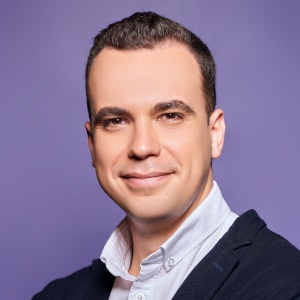
Momchil Elenkov
Telco & B2B Partnership Director Rakuten Viber
Momchil Elenkov
Momchil Elenkov is Telco & B2B Partnership Director for Rakuten Viber. Momchil is responsible for the Viber strategic commercial partnerships with mobile operators on a group level as well as in various markets worldwide. His fields of action also include tech-projects related to AI, Chatbots, B2B, and B2C- communication between corporations and end-users via the Viber-ecosystem. Momchil has a background in two of the leading telecoms in Bulgaria where he managed the mobile products and services and CRM strategies and activities.
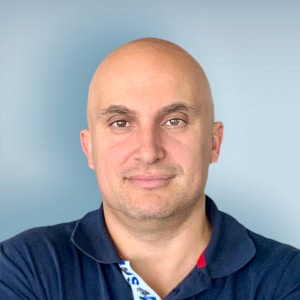
Mony Dochev
CTO Imperia Online JSC
Mony Dochev
Mony Dochev is a serial entrepreneur, avid developer with more than 25 years of experience in the IT industry, master of in-game monetization, tech enthusiast and current CTO of Imperia Online JSC. He has a Master of Science degree in Informatics at Sofia University. In the past decade he has:
• Co-founded Imperia Online – a Bulgarian game production company with more than 45 million registered users, part of Stillfront Group since 2018.
• Co-founded Upnetix – one of the largest outsourcing studios for mobile applications in Southeast Europe, part of ScaleFocus since 2018.
• Co-founded IT Talents – the only academy for free education of developers, that realizes more than 95% of its graduates in 80 partner IT companies.
• Mentored start-up projects at Launchub and Eleven.
• Juried Forbes e-awards.
• Lectured at many conferences and seminars.
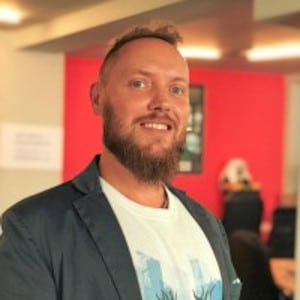
Boyan Karpachev
Head Of Marketing WebGround
Boyan Karpachev
Developing digital content, managing websites, setting up banner campaigns, email programmes and digital advertising campaigns for WebGround portfolio of digital brands (Actualno.com, Expert.bg, Sportlive.bg and iWoman.bg) while ensuring consistency across its all brands and channels.
Working collaboratively with content, copywriting, creative, design and development teams to align activities and goals of all marketing collaterals including websites, banners, brochures, newsletters and html emails.
Analysing campaigns and adapting/improving campaigns based on results.
Building and developing partnerships with key titles, associations and key influencers.
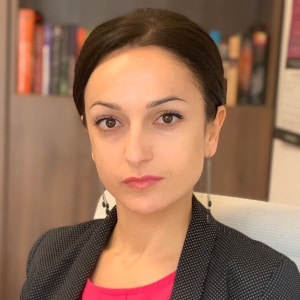
Daniela Ketenlieva
Managing Director Novinite Group
Daniela Ketenlieva
Managing Director of an online media, with over 18 years of proven experience in the digital market in Bulgaria.
Previous positions held include commercial director, marketing manager of online media and an international company. She has participated in numerous projects from start to completion, has experience in publishing, organizing events, etc.
Holds a degree from the University of National and World Economy, London School of PR and certificates from other professional courses.
Believes in personal attitude, always being patient and committed to everything she undertakes.
Very fond of family and friendship. Has a son in 3rd grade.
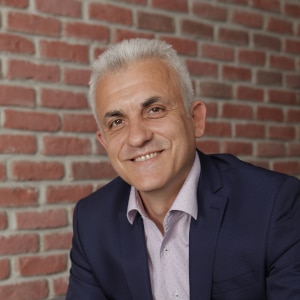
Ivan Georgiev
Manager of Kaufland Service IT Hub Kaufland Service IT Hub
Ivan Georgiev
Ivan Georgiev is the Manager of Kaufland Service IT Hub since its opening in 2016. The Hub is part of the Schwarz group which operates in 29 countries, on three continents and has more than 400 000 employees worldwide. The most famous brands gathered under its hat are Kaufland, Lidl & GreenCycle. The company here in Bulgaria is responsible for the operations of more than 11 000 stores. Its main strengths lie in Development, Infrastructure and Business & Application Support. The IT Hub started with 9 people and under Ivan’s leadership set up a course for steady growth. Not just in numbers but also in responsibilities. The company now has more than a 150 specialists and plans to expand even further.
Ivan comes with more than 16 years of experience in the field of IT. His background is one of a SAP Consultant but his strength lies in management as he has been dedicated to it for the last 12 years at least. He is most passionate about building sustainable teams and working on projects which span between countries. In the context of the Bulgarian IT market he works for investing in young professionals and helping Bulgarian specialists return back to their home country. For the company is a founder of the first internship program with high-school students from technical schools and is about to launch an internal academy in OOP.
With his strong management and leading example Ivan Georgiev has set the foundations of Kaufland Service, defined its corporate strategy and managed operations. He has made it into a recognizable company which can only be trusted and respected.
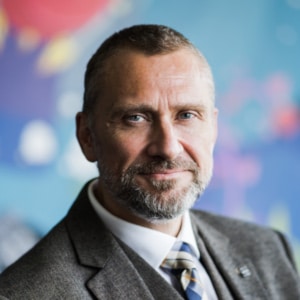
Dave Morris
Delivery Director and Head of Engineering REWE Digital
Dave Morris
Dave Morris is the Delivery Director and Head of Engineering for REWE Digital, a provider of online strategy and execution for the REWE Group – a $60B German retail and tourism group that includes the REWE supermarket chain which has more than 15,000 stores and 360,000 employees worldwide.
Under Dave’s leadership, REWE Digital is responsible for the digitalization of the food retail sector in Germany; ensuring that REWE customers are given the opportunity to order food online which is then delivered, fresh and cooled, to their doorsteps at their desired time.
Before joining REWE Digital, Dave was IT Engineering Director for Travis Perkins – the UK’s largest builder’s supply retailer where he led multiple digital transformation projects. Dave also led a 250+ person team in a multi-million dollar e:commerce platform rollout as Delivery Director at Tesco.
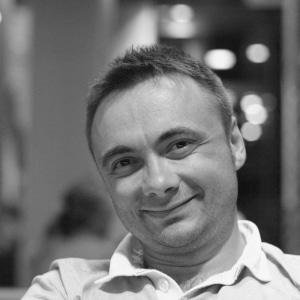
Dimitar Kostov
R&D Director VMware
Dimitar Kostov
Dimitar started his career in the IT industry over 25 years ago, while studying at the Sofia University.
Today Dimitar is a R&D Director at VMware, engaged in starting new products, building product organizations and taking part in the strategic planning of product families.
His Cloud Foundation team is delivering the easiest way to deploy and operate Kubernetes-based application runtime infrastructures. In his free time, Dimitar is an IoT evangelist.
Prior to VMware, he co-founded, led and held leadership positions in a number of high-tech companies, such as Methodia, SAP, Sciant.
Dimitar is a strong believer in that advanced technologies will continue to make the world a better place.
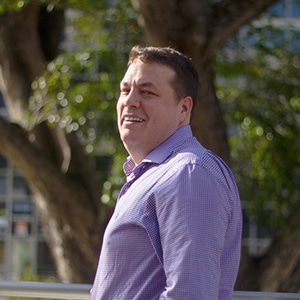
Kai Hackbarth
Bosch Software Innovations
Kai Hackbarth
Kai Hackbarth has been working as an evangelist at Bosch Software Innovations since July 2016. He previously worked at ProSyst Software, which Bosch acquired in 2015. Kai Hackbarth plays a pivotal role in technical standardization in the OSGi Alliance, of which he is also a Board of Directors member. He served as Co-Chairman of the OSGi Residential Expert Group from 2008 to 2018. Kai Hackbarth furthermore coordinates a wide range of Internet of Things (IoT) research projects. He specializes in smart homes, automotive applications, and the IoT. Last but not least, he closely follows the latest trends in these three sectors and provides regular guidance on the strategic positioning of the corresponding product portfolios at Bosch Software Innovations.
Prototyping platforms for any IoT use case
Internet of Things is becoming the heart of more and more projects. Each IoT project starts with a PoC prototype. This workshop will walk you through what a prototyping platform is and how it impacts the development of a project. Using the Bosch XDK, we will go through what such a board offers as sensors, connectivity, functionality and extensions and interesting examples from the real world. Bosch and Zuhlke developed the platform to encourage community development and open source coding thus we will see some live coding on the stop.
Internet of Connected Everything
Connectivity is transforming all kind of domains – not just smart homes but also industry, buildings, agriculture and mobility. IoT has finally reached the corporate sector and is now being increasingly commercialized. As predicted Bosch alone already has more than 50 million of connected devices! . In 2025 all our products either possess intelligence themselves, or AI will have played a key role in their creation. In their keynote address, Dr. Pavlin Dobrev and Kai Hackbarth traces Bosch’s evolution to an IoT company. We will dive into the reference architecture for IoT domains like connected building, retail, smart architecture. For Bosch, Things are the most essential part in IoT. We design them to the requirements of IoT: Aware, Autonomous and Actionable.
Key findings:
- Bosch transformation from a traditional manufacturer to an IoT and high-tech company: Challenge accepted
- Innovation is part of our DNA
- Bosch embraces sustainability: climate neutrality worldwide by 2020 and new solutions for better air in cities
- Nobody can do IoT alone: IoT platforms, software, and developers
- The impact of open source and agile organization
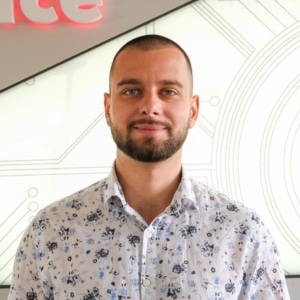
Teodor Dimitrov
Java Development Leader Kaufland Service IT Hub
Teodor Dimitrov
Teodor is a Java Development Leader in Kaufland Service IT Hub. Even though he was recently promoted to the role Teo has previous experience in working in the Telecom industry as a Team Leader with a proven track record of leading people to success. He is also extremely oriented to teaching others as he was responsible for training people in the Software University.
Since he joined the IT Hub in 2017, he was part of the founding of two strategical projects K-Standards and Bau-Standards which are now successfully in production. He also took a huge role in the creation and development of the Internship Program of the company which he practically built from scratch. In his TL role he takes leadership of the Java Team and the Internship Program. He also utilizes his strong business partnership skills to ensure the smooth collaboration between the company international teams in all projects.
Reactive backend with RDBMS
TBD
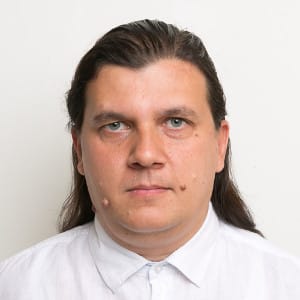
Dr. Pavlin Dobrev
Bosch Software Innovations
Dr. Pavlin Dobrev
Dr. Pavlin Dobrev is a Research and Development Manager at Bosch Software Innovations. The company owned by Bosch is focused on developing software for the Internet of Things (IoT). He is charge for the Quality Management of the Bosch IoT Suite, the entire support of ISO 9001, ISO 20000 and ISO 27001 at Bosch Software Innovations, as well as various research and customer projects.
Dr. Dobrev has more than two decades of experience with IoT including latest Java technologies, as well as in OSGi and embedded systems. He is an active participant in the OSGi Alliance, Java Community Process and other technical standards groups. He is a member of the Eclipse Foundation and participates in the development of the Eclipse IDE as a committer in the Equinox project.
Pavlin Dobrev has a PhD in Computer Systems in the area of Knowledge Management from the Institute for Parallel Processing, Bulgarian Academy of Sciences and holds an MsC in Computer Science from the Faculty of Mathematics and Informatics of Sofia University. He has written many scientific and technical publications and participated as speaker in prestigious international conferences.
Prototyping platforms for any IoT use case
Internet of Things is becoming the heart of more and more projects. Each IoT project starts with a PoC prototype. This workshop will walk you through what a prototyping platform is and how it impacts the development of a project. Using the Bosch XDK, we will go through what such a board offers as sensors, connectivity, functionality and extensions and interesting examples from the real world. Bosch and Zuhlke developed the platform to encourage community development and open source coding thus we will see some live coding on the stop.
Internet of Connected Everything
Connectivity is transforming all kind of domains – not just smart homes but also industry, buildings, agriculture and mobility. IoT has finally reached the corporate sector and is now being increasingly commercialized. As predicted Bosch alone already has more than 50 million of connected devices! . In 2025 all our products either possess intelligence themselves, or AI will have played a key role in their creation. In their keynote address, Dr. Pavlin Dobrev and Kai Hackbarth traces Bosch’s evolution to an IoT company. We will dive into the reference architecture for IoT domains like connected building, retail, smart architecture. For Bosch, Things are the most essential part in IoT. We design them to the requirements of IoT: Aware, Autonomous and Actionable.
Key findings:
- Bosch transformation from a traditional manufacturer to an IoT and high-tech company: Challenge accepted
- Innovation is part of our DNA
- Bosch embraces sustainability: climate neutrality worldwide by 2020 and new solutions for better air in cities
- Nobody can do IoT alone: IoT platforms, software, and developers
- The impact of open source and agile organization
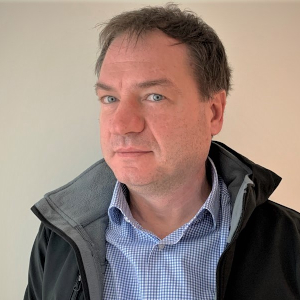
Stoyan Rakadjiyski
Manager applications development and services for Bulgaria DXC Technology
Stoyan Rakadjiyski
Stoyan Rakadjiyski is manager applications development and services for Bulgaria in DXC Technology. He holds a Master of Science degree in computer science from Sofia University “St. Kliment Ohridski” and started his career in IT 24 years ago.
His team in DXC runs projects on latest technologies in Java, .Net and C++ for DXC customers, which are global leaders in their business domains such as Banking, Insurance, Transport, Health cate, Engineering software and others. The team is focused on getting deep knowledge in how the customers work and to deliver them innovation through adoption of next generation IT solutions.

Mark Stephen Meadows
Botanic Technologies, Inc
Mark Stephen Meadows
Meadows is an American author, inventor, artist and entrepreneur. With 18 years in AI, 22 in VR, and 7 years in blockchain he has designed and developed AI applications at some of the world’s top research labs (Xerox-PARC, SRI, Waag, and others). He has worked as a government-level consultant in both hemispheres, is the author of a half-dozen patents, and has written four books that examine technology and their social consequences. As founder / CEO of Botanic.io and co-founder / Trustee of SeedToken.io, he leads the vision of the companies by inventing new methods of computer-human interaction, designing the hearts and minds of highly social software robots.
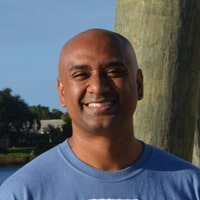
Reza Rahman
Microsoft
Reza Rahman
Reza Rahman is a long time consultant now working at Microsoft. He has been an official Java technologist at Oracle. He is the author of the popular book EJB 3 in Action. Reza has long been a frequent speaker at Java User Groups and conferences worldwide including JavaOne and Devoxx. He has been the lead for the Java EE track at JavaOne as well as a JavaOne Rock Star Speaker award recipient. Reza is an avid contributor to industry journals like JavaLobby/DZone and TheServerSide. He has been a member of the Java EE, EJB and JMS expert groups over the years. Reza implemented the EJB container for the Resin open source Java EE application server. He helps lead the Philadelphia Java User Group.
Reza has over a decade of experience with technology leadership, enterprise architecture, application development and consulting. He has been working with Java EE technology since its inception, developing on almost every major application platform ranging from Tomcat to JBoss, GlassFish, WebSphere and WebLogic. Reza has developed enterprise systems for well-known companies like eBay, Motorola, Comcast, Nokia, Prudential, Guardian Life, USAA, Independence Blue Cross, Anthem, CapitalOne and AAA using Java EE and Spring.
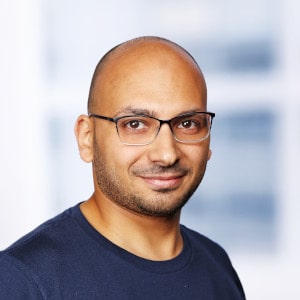
Ahmad Gohar
IBM
Ahmad Gohar
Ahmad Gohar is a Sr. Software Architect, People Manager, Microservices – Java & Web Development Services Area Lead at IBM. He has been building and leading developer solutions/communities for 13+ years at several companies. Subject Matter Expert (SME) for Java/Web/Blockchain technologies. Furthermore, Gohar is a Java Community Process (JCP) Member. Gohar has deep expertise in leading cross-functional teams to develop and execute strategy. He has long been a frequent speaker at universities, JUGs, events, and conferences worldwide.
Moreover, Gohar holds M.SC in Software Engineering from Egypt, also MIBA in Global Business Management from ESLSCA France. He is IBM Certified Expert IT Specialist, OpenGroup Master IT Specialist, OpenGroup TOGAF 9.1 L2 Certified. Also, he is certified as OCEJPA, OCPWCD, OCPJP, OCPSQL/PL, OCASQL/PL, MCP. Gohar Won 2014/2016 Duke’s Choice Awards, GBS Excellence Award 2017, and Manager Choice Award 2017/2018/2019. Furthermore, Gohar is an Egyptian Java user group EG-JUG member.
His career has taken him to different companies such as eFinance, United Nations, ResalaSoft, Hyundai Construction, and Misr Consultant.
Microservices with Docker and Kubernetes: Best Practices for Java Developers
This session is for Java developers and architects interested in developing microservices. It starts with the high-level understanding and fundamental prerequisites that should be in place to be successful with a microservice architecture. Unfortunately, just using new technology doesn’t magically solve distributed systems’ problems. The presentation takes a look at some of the forces involved and what successful companies have done to make microservices work for them, including culture, organizational structure, and market pressures. Then it takes a deep dive into a few Java frameworks for implementing microservices. The accompanying source code repository can be found on GitHub.

Neil Stevenson
Hazelcast
Neil Stevenson
Neil Stevenson is a Solution Architect for Hazelcast®, the Industry’s leading open source In-Memory Computing Platform.
In more than 25 years of work in IT, Neil has designed, developed and debugged a number of software systems for companies large and small.
Wrong First Time
How does continuous improvement fit with continuous delivery ? In this talk we’ll try to understand how a ML model can be updated in a live system. Simplistically this is just a case of deploy the next version of a model. The catch here is to deploy to a live system. We don’t want any gaps in our processing. We’re connected to the real world after all! So here we’ll look at an environment for running ML models that allows us to deploy new versions,yet keep the old versions running til we are happy the new version is confirmed as better. This is the real world, so a real problem.

Lachezar Balev
REWE Digital
Lachezar Balev
I am a software engineer with 19+ years real experience in various projects. I met Java in 2000 in the form of J2SE 1.2. But my hello world “application” was written in BASIC long before that. Currently I work at REWE Digital Bulgaria on an exciting Microservice oriented architecture. I’m a curious person – I love to experiment, peek under the hood of popular open source frameworks and build usable and reliable software. You can meet me at Stack Overflow, GitHub, and some smaller online communities. In my free time I love riding my motorbike around the country.
Deploying containerized applications into a Kubernetes cluster
Our fantastic apps deserve the right infrastructure! In this talk we will make a short introduction to Kubernetes (K8s). Next we will dockerize and deploy two simple applications into a k8s cluster.
Our ambitious goal is that the audience will feel comfy with what we are doing and will be able to easily follow us. No prior knowledge of k8s is required! The apps and the scripts that we are going to use will be available at Github.
The talk will begin with a quick glimpse into the k8s architecture. Then we will go a bit deeper with some of the most important k8s objects like Nodes, Controllers, Services. When we lay down the foundations it will be time to introduce our sample applications – a small Spring Boot backend and an Angular frontend which offers the possibility for amusing interaction with the attendees (e.g. by scanning a QR Code). At the end we will deploy these apps in GClould and/or Minikube and see them up and running.
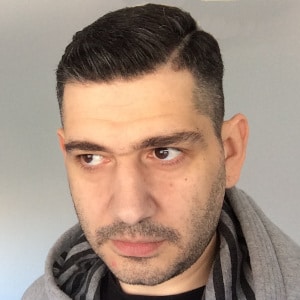
Ioannis Canellos
Red Hat
Ioannis Canellos
Ioannis has more than 15 years experience as Java developer 7 of which are as full time OpenSource developer.
He is a member of the Apache Software Foundation, with contribution to numerous projects as a committer and PMC member.
He is currently working as a Principal Software Engineer at Red Hat as part of Red Hat Spring team, where he spends most of his time implementing tools and frameworks related to Kubernetes, Openshift and Spring Boot.
Quarkus: Supersonic, subatomic Java
The Cloud Native Era has changed a lot about what we expect from our applications making it challenging for traditional server side Java technologies. This talk will introduce you to Quarkus, a Kubernetes native Java stack that can tailor your application for GraalVM & Hotspot providing amazingly fast boot times and incredibly low RSS memory usage, making Java more than relevant in this brave new world.
Get your hands dirty with Quarkus: The Container First Cloud Native Java framework
Breaking news: You no longer need a PhD in quantum physicist to write Java that breaks the sound barrier! Join us live tonight and we are going to walk you through writing supersonic subatomic java with Quarkus!
Georgios and Ioannis are going to deliver a “deep dive” session into Quarkus structured into two ‘self-contained’ parts. The first part is going to cover application development essentials. The second part is going to be about cloud and integration
Please download the following before attending: https://github.com/iocanel/java2days-sofia-2019#Requirements

Blanca Garcia Gil
BBC
Blanca Garcia Gil
Blanca Garcia Gil is a principal systems engineer at BBC. She currently works on a team whose aim is to provide a reliable platform at petabyte scale for data engineering and machine learning.
Last year she gave her first talk at DevoxxUK and is keen in sharing her journey and the positive benefits it has had one year on.

Ryan Cuprak
Dassault Systemes
Ryan Cuprak
Ryan Cuprak is an CPG & Retail, Formulation R&D Development Senior Manager at Dassault Systemes, co-author EJB in Action 2nd Edition from Manning and the NetBeans Certification Guide from McGrall-Hill. He is also president of the Connecticut Java Users Group since 2003. Ryan is a JavaOne Rockstar Presenter. At Dassault Systemes he works on the ENOVIA Enginuity chemical formulation software and is involved in desktop and backend server development as well as client data migrations. Prior to joining DS, Ryan worked for a distributed computing company, TurboWorx, and also Eastman Kodak’s Molecular imaging Systems group, now part of Burker. Ryan earned a BS in computer science and biology from Loyola University Chicago.
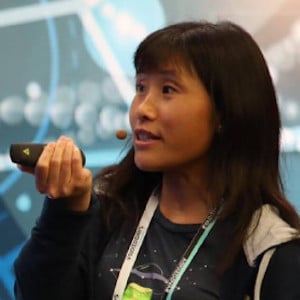
Emily Jiang
IBM
Emily Jiang
Emily Jiang is a Java Champion. She is Liberty Microservices Architect and Advocate, STSM in IBM, based at Hursley Lab in the UK. Emily is a senior MicroProfile lead and has been working on MicroProfile since 2016 and leads the specifications of MicroProfile Config, Fault Tolerance and Service Mesh. She is CDI Expert Group member.
She has worked on the WebSphere Application Server since 2006 and is heavily involved in Java EE and MicroProfile implementation in Liberty releases.
She regularly speaks at conferences, such as Code One, DevNexus, JAX London, Voxxed, Devoxx US, Devoxx Belgium, Devoxx UK, Devoxx France, EclipseCon, etc. Follow her on Twitter @emilyfhjiang and/or connect with her on LinkedIn (https://www.linkedin.com/in/emily-jiang-60803812/).
Jakarta EE – ask the Experts
Reactive Microservices in Action
After creating your first microservice and putting it into production, you heard a lot of people talking about reactive. You’d like to find out more about reactive and have several questions: Why should I care? What I can do to make my microservice reactive, nonblocking? How can I use CompletionStage in my microservices? Should I consider using Reactive Streams? Come to this session to find out what reactive means. It explains reactive programming and then Reactive Streams, followed by a demo of using MicroProfile Fault Tolerance, MicroProfile Reactive Streams Operators, and MicroProfile Reactive Messaging to create a truly reactive microservice and integrate with Kafka.
Creating a cloud-native microservice – which programming model should I use?
Creating cloud-native microservices is common but which programming model to choose from.
At the moment, MicroProfile and Spring are two popular programming models for developing microservices. What are the differences or commonalities between them?
This session is to focus on comparing the two programming model side by side. If you are Spring developer, after this session, you should be able to grasp MicroProfile very quickly and vice versa.
This session also contains a live demo of developing microservices using MicroProfile specifications and then deploy them onto Open Liberty.
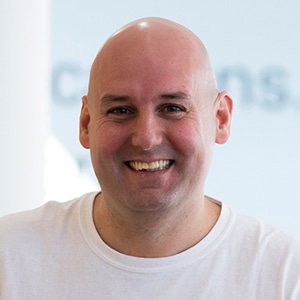
Luis Weir
Oracle
Luis Weir
Luis Weir is a Director of Software Development at Oracle and a former Chief Architect at Capgemini, Oracle Ace Director and Oracle Groundbreaker Ambassador. An API management and microservices evangelist, Luis has over 17 years of experience implementing complex distributed systems around the world.
Co-author of 3 other books as well as numerous articles and white papers, Luis has been a frequent speaker frequent speaker at known events such as CodeOne, Devoxx, Gartner AAD&I, Oracle OpenWorld, Java2Days and many user groups and meetups.
Luis holds an MS in Corporate Networks and Systems Integration from the Universitat Politecnica de Valencia (UPV) and a BS in Electronics Engineering from the Universidad Nueva Esparta.
Event-driven API strategies: from WebHooks to GraphQL Subscriptions
This talk explores different strategies to get around common constraints imposed by synchronous (request/response) APIs when it comes to supporting asynchronous and event-driven communication between server and clients thus avoiding inefficient and infective API pooling techniques.
Through a comprehensive architectural overview and a series of hands-on demonstrations, this presentation will illustrate how different asynchronous API strategies such as the above mentioned can be applied in order to deliver event-driven architectures in the web.
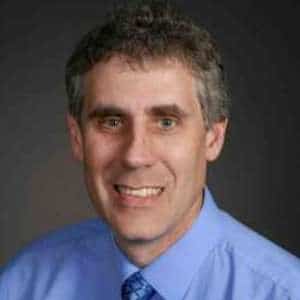
Tom Mueller
vmware
Tom Mueller
Tom Mueller is a Staff Engineer 2 at VMware specializing in the development and cloud deployment of the Workspace ONE Access product which provides federated user authentication and control of application access for the Workspace ONE suite. Tom’s experience with Java dates back almost to when it was called Oak and included early applet development and later server development with portlets (JSR-168), the Java EE reference implementation (Glassfish), and various identity-related technologies. His current role involves full stack development of both cloud-hosted and on-premises software solutions.
Journey from On-prem to the Cloud, the Field Guide
This presentation will introduce VMWare Identity Manager and it’s multi-year transformation from on-prem only product to Software-as-a-Service with multiple deployments per day, serving customers around the globe.
This “field guide” will focus on concrete learnings and practical examples of moving an on-prem monolith to AWS-hosted set of micro-services built on Java Stack. We will talk about a monolith decomposition, patterns and practices for SaaS and also about the path to achieving 99.99% availability.

Josef Cacek
Hazelcast
Josef Cacek
Josef is a Security Engineer at Hazelcast. He is a passionate Java developer, open-source contributor and decent runner. He spent 10+ years by focusing on different aspects of application security. He takes care of security at Hazelcast, before that he was a security freak at JBoss. Josef maintains several open-source projects – for instance the jd-cmd (command line wrapper for Java Decompiler), JSignPdf (digital signatures for PDFs), totp-me (TOTP authenticator for Java ME enabled devices).
Standard Java structures distributed
Java offers a wide set of data structure implementations ready for developers. Collections are a great and powerful example.
These standard data structures are limited by borders of a single JVM. They depend on available memory within one server. They don’t scale during high loads.
In-memory data grids (IMDG) may help to solve this problem. They offer distributed versions of Java data structures. Data is spread across multiple servers. Data grids provide failover features and prevent data loss when a server crashes. And you can simply scale them up and down. Let’s go through the most popular Java native IMDG implementations and compare distributed data structures provided.
Keep Your Secrets Secret – TLS for Java developers
Hackers, spies and Sofia never sleep. It became a custom that network communication is protected by a TLS protocol. TLS provides data confidentiality, integrity and authenticity.
The TLS is not just great, it’s also complex with a bunch of extensions. It’s not hard to use it in the wrong way and stay vulnerable against different types of attacks. What happens when your certificates expire? Do you validate hostnames? Which certificate authorities are trusted in your setup?
Let’s look together what support Java runtime provides out-of-the-box and what developers have to handle manually. The presentation will cover the performance consequences of using TLS and how the certificate validation works. We will also talk about the common implementation flaws and TLS communication debugging.
After the talk, attendees will be able to identify issues in their TLS usage and fix them.
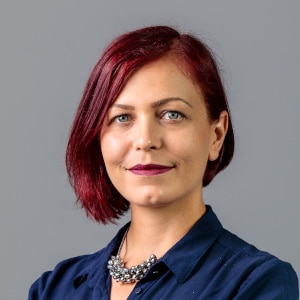
Tushka Dermendzhieva
ScaleFocus
Tushka Dermendzhieva
My name is Tushka and I am a Java Technical lead at Scalefocus. I work mainly in Java based projects. I have strong technical background mostly as a Java backend developer.
I am passionate about new technologies and mentoring. I am also interested in topics for self-improvement and coaching.
I love traveling abroad, meeting new people and learning about other cultures.
gRPC: A Modern Toolkit for Microservice Communication
We are living in a world where modern applications are consistently moving towards microservice-based architecture. Thus, internal service communication is becoming a vital part of any system. gRPC is a modern framework, developed initially at Google, which aims to solve many issues that we face using traditional means of communication such as REST. In its shell, it is an open source RPC framework which passes data through efficient protocol buffers. The framework is based on a client-server model of remote procedure calls and Interface Definition Language code generation. It supports languages, such as Java, C++, Python, Node.js, Go, and many others.
Here is a list with topics we are going to discuss during the talk:
1. What is gRPC?
2. Problems with REST and how gRPC can solve them
3. When to use gRPC over REST
4. Comparison to other communication technologies
5. Demo
6. Conclusion
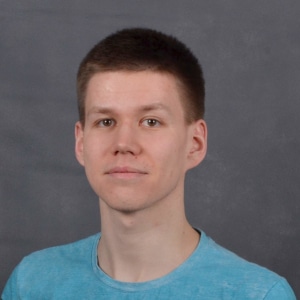
Anton Sutarmin
Devexperts
Anton Sutarmin
Anton has spent more than three years in commercial front-end development and has been passionate about it since high school. Currently, he is an eager explorer of Typescript, functional, and reactive programming, as well as making beautiful interfaces. Anton also loves various sports and enjoys traveling in his spare time.
Build frontend apps that never crash with fp-ts ecosystem
One of the most important properties of modern frontend applications is reliability. Want to learn how to build frontend applications that never crash? Join me and let’s dive into the know-how of making your apps more reliable and your development process more focused with the help of our fp-ts library and its large ecosystem. I’ll share insights on true type safety with Typescript, runtime exception safety, IO safety, and much more.
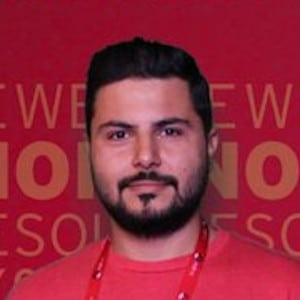
Ali Ok
Red Hat
Ali Ok
Ali Ok works for Red Hat with a strong focus on the cloud. He is an Apache committer.
He is using Kubernetes, OpenShift and Operators in his day-to-day activities.
He experiments with many other emerging technologies in his free time.
Kubernetes Operators 101
Kubernetes does all the boring yet critical tasks like horizontal scaling and zero down-time deployments, but what about more complex tasks like database sharding and agent registration?
Kubernetes operators are capable of automating complex tasks, reducing the human factor even more. The barrier to entry is not as high as you think!
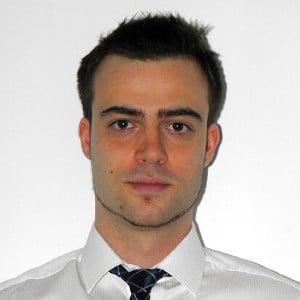
Georgi Sotirov
ScaleFocus
Georgi Sotirov
Georgi is a full-stack developer with more than 5 years experience with Java programming and related technologies. He has worked across various fields such as banking, fintech, logistics and telecoms. Georgi enjoys developing both front-end and back-end applications, however his favourite language remains Java for its flexibility and huge potential. In his free time, he enjoys sports, movies and spending time with his friends and family.
gRPC: A Modern Toolkit for Microservice Communication
We are living in a world where modern applications are consistently moving towards microservice-based architecture. Thus, internal service communication is becoming a vital part of any system. gRPC is a modern framework, developed initially at Google, which aims to solve many issues that we face using traditional means of communication such as REST. In its shell, it is an open source RPC framework which passes data through efficient protocol buffers. The framework is based on a client-server model of remote procedure calls and Interface Definition Language code generation. It supports languages, such as Java, C++, Python, Node.js, Go, and many others.
Here is a list with topics we are going to discuss during the talk:
1. What is gRPC?
2. Problems with REST and how gRPC can solve them
3. When to use gRPC over REST
4. Comparison to other communication technologies
5. Demo
6. Conclusion
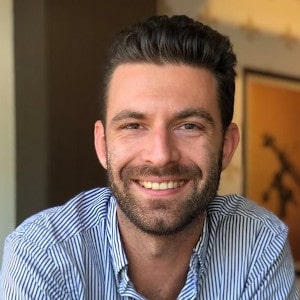
Ondrej Stastny
VMWare
Ondrej Stastny
Born and raised in Prague, Czech Republic, Ondrej has spent the last couple of years leading engineering teams in Seattle, WA. In his 12+ years in the industry, he has worked on a variety of products from search engines to mobile apps, as a full stack software engineer, a field engineer, and an engineering leader. His recent work involved shipping features for VMware Workspace ONE UEM which integrate with computer assembly lines at Dell Technologies. And now he’s building a new team to tackle identity and single sign-on across the portfolio of VMware products.
Journey from On-prem to the Cloud, the Field Guide
This presentation will introduce VMWare Identity Manager and it’s multi-year transformation from on-prem only product to Software-as-a-Service with multiple deployments per day, serving customers around the globe.
This “field guide” will focus on concrete learnings and practical examples of moving an on-prem monolith to AWS-hosted set of micro-services built on Java Stack. We will talk about a monolith decomposition, patterns and practices for SaaS and also about the path to achieving 99.99% availability.
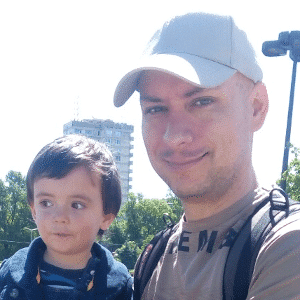
Georgi Peychev
REWE Digital
Georgi Peychev
Georgi is a software engineer with more than 15 years of experience and background in a wide range of contexts (such as banking, insurances, large retail). Most of the time he is focusing on backend development with Spring Boot but also likes Angular and Android development. Currently he is working for REWE Digital.
Deploying containerized applications into a Kubernetes cluster
Our fantastic apps deserve the right infrastructure! In this talk we will make a short introduction to Kubernetes (K8s). Next we will dockerize and deploy two simple applications into a k8s cluster.
Our ambitious goal is that the audience will feel comfy with what we are doing and will be able to easily follow us. No prior knowledge of k8s is required! The apps and the scripts that we are going to use will be available at Github.
The talk will begin with a quick glimpse into the k8s architecture. Then we will go a bit deeper with some of the most important k8s objects like Nodes, Controllers, Services. When we lay down the foundations it will be time to introduce our sample applications – a small Spring Boot backend and an Angular frontend which offers the possibility for amusing interaction with the attendees (e.g. by scanning a QR Code). At the end we will deploy these apps in GClould and/or Minikube and see them up and running.
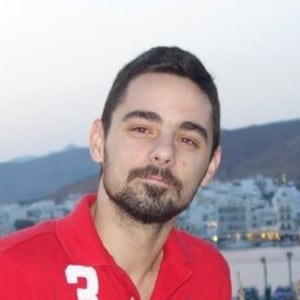
Georgios Andrianakis
Red Hat
Georgios Andrianakis
Georgios is a Senior Software Engineer working for Red Hat. He works on Java frameworks and their synergies with cloud native systems but also has a taste for DevOps and Data Engineering.
Quarkus: Supersonic, subatomic Java
The Cloud Native Era has changed a lot about what we expect from our applications making it challenging for traditional server side Java technologies. This talk will introduce you to Quarkus, a Kubernetes native Java stack that can tailor your application for GraalVM & Hotspot providing amazingly fast boot times and incredibly low RSS memory usage, making Java more than relevant in this brave new world.
Get your hands dirty with Quarkus: The Container First Cloud Native Java framework
Breaking news: You no longer need a PhD in quantum physicist to write Java that breaks the sound barrier! Join us live tonight and we are going to walk you through writing supersonic subatomic java with Quarkus!
Georgios and Ioannis are going to deliver a “deep dive” session into Quarkus structured into two ‘self-contained’ parts. The first part is going to cover application development essentials. The second part is going to be about cloud and integration
Please download the following before attending: https://github.com/iocanel/java2days-sofia-2019#Requirements

Vladimir Schreiner
Hazelcast
Vladimir Schreiner
Vladimir is a technical product manager with an engineering background (Master’s degree in Computer science) and deep expertise in stream processing and real-time data pipelines. Ten years of building internal software platforms and development infrastructure have made him passionate about new technologies and finding ways to simplify data processing. Therefore Vladimir joined Hazelcast in 2016 and he is a product guy behind Hazelcast Jet streaming engine. He authored the Understanding Stream Processing DZone Refcard. Vladimir is also a lecturer with the Czechitas Foundation, whose mission is to inspire women and girls to explore the world of information technology.
Stream Processing Essentials Training
Take your first steps to understanding and start working with stream processing! By the end of the course, you will be able to build and run distributed streaming pipelines in Java:
- Explain when to use streaming
- Design a streaming application from the building blocks
- Transform, match, correlate and aggregate continuous data
- Scale, deploy, and operate streaming apps
We will also cover the advantages and disadvantages of the stream processing technologies available when approaching real-world problems.
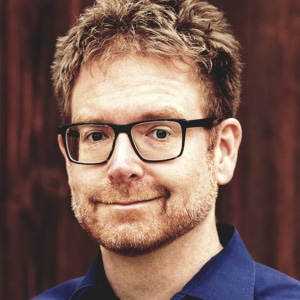
Christian Heger
Zuhlke
Christian Heger
Christian is creating the environment to develop, innovate and truly collaborate at Zühlke Engineering in Munich. He comes from a software development and architecture background. Currently, he does a lot of interesting things: team leadership – being responsible for the team in Munich and building up our team in Sofia. Christian is constantly thinking how to improve the way his teams work together. He is also consulting clients on how to get going with innovation, and how to adopt agility and technology on the way.
Surviving IoT
Christian is creating the environment to develop, innovate and truly collaborate at Zühlke Engineering in Munich. He comes from a software development and architecture background. Currently, he does a lot of interesting things: team leadership – being responsible for the team in Munich and building up our team in Sofia. Christian is constantly thinking how to improve the way his teams work together. He is also consulting clients on how to get going with innovation, and how to adopt agility and technology on the way.

Dr. Stephen Robinson
Technical Lead and Solution Architect Tide
Dr. Stephen Robinson
Technical Lead and Solution Architect with experience building direct-to-client and back-office financial services platforms covering the full stack.
Excited to demonstrate how good architecture, collaboration and process can enable incremental and reliable delivery on transformative business goals and realise the disruptive opportunities of technology.
An advocate for message driven and microservice architectures to enable low risk, responsive change.
Scaling up a banking challenger with event driven architecture
Microservices have saved us from the crushing pain of monoliths, only to raise a whole raft of questions about how microservices can work together to achieve meaningful features for end users.
One approach promoted by some famous names (LinkedIn, Netflix etc.) is to adopt a message driven architecture. This talk will introduce message driven architecture and discuss some of the advantages, risks and how to mitigate them, as well as some patterns which can help you take full advantage of the shift. We’ll also touch on Tide’s experience of moving to messaging as part of scaling up our development organization.
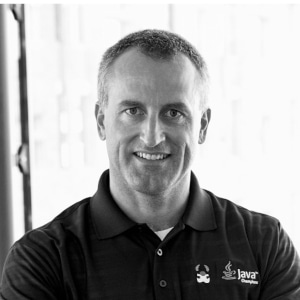
Ivar Grimstad
Eclipse Foundation
Ivar Grimstad
Ivar Grimstad is the Jakarta EE Developer Advocate at Eclipse Foundation. He is a Java Champion and JUG Leader based in Sweden.
Ivar is the PMC Lead for Eclipse Enterprise for Java (EE4J) and involved in the Jakarta EE Working Group. He is also one of the community representatives in the JCP Executive Committee as well as specification lead for JSR 371 (MVC 1.0).
Ivar is also involved in Eclipse MicroProfile, Apache NetBeans and a frequent speaker at International developer conferences.
Jakarta EE – ask the Experts
Microservice Patterns – implemented by Eclipse MicroProfile
Eclipse MicroProfile provides specifications for the most commonly used microservice patterns. This session presents a group of patterns that will be in explained and demoed live in a down-to-earth and easily understandable way. Patterns covered include Service per Container, Externalized Configuration, Health Check API, Application Metrics, Circuit Breaker, Access Token, Distributed Tracing. There will be live coding and demo of all technologies implementing the patterns.
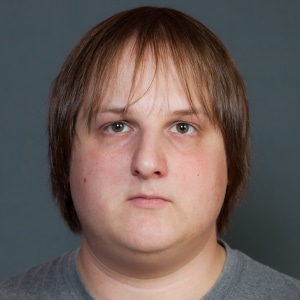
Pavel Chernyshov
Devexperts
Pavel Chernyshov
Master iOS developer with over eight years of hands-on experience, Pavel is in a never-ending search for processes and tools that produce faster, better mobile applications. Pavel leads a multinational distributed team of developers located in different offices and knows how to unite them in pursuit of an end product. He’s a fan of Alistair Cockburn that believes agile methodologies will save the world. He doesn’t understand the term feature freeze.
Take no objections to Java for iOS
To a certain extent you can reuse the code when building mobile applications both for iOS and Android. Ideally, you want to reuse as much as possible to save time. In client-server apps, shared logic can be moved to the server-side, and most of the time, it’s acceptable. But what if it’s not in favor of the UX? What if it’s the kind that can’t be moved? What if you don’t even have a server? Can you optimize, or is it time to double the work and time spent fixing bugs to account for different platforms?
This is where J2ObjC comes into play. J2ObjC is an open-source tool from Google that can translate source code written in Java into Objective-C. This way, Java source can become a part of the iOS builds.
Devexperts have been tailoring code translation from Java to ObjC for years, and this approach is integrated deeply into our development process. We’re here to inspire you to give it a try yourself by showcasing some of our biggest wins with J2ObjC. The road ahead is scary. Fear not, we’ve got the painkiller for easily integrating J2ObjC into the development pipeline.
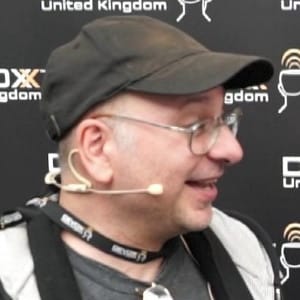
Jack Shirazi
Hotels.com
Jack Shirazi
Jack Shirazi works in the Performance and Reliability team at Hotels.com, part of Expedia Group. He is the founder of JavaPerformanceTuning.com and author of Java Performance Tuning (O’Reilly), and has been an official Java
Champion since 2005.
Jack has worked at all levels and all stages of IT projects in several industries including with real-time, low latency and highly scaled applications. As well as authoring his popular book and contributing to several other books, Jack has published over 60 articles on Java performance for various sites and magazines; and has published over 200 newsletters for JavaPerformanceTuning.com over 15 years, and with these newsletters published around 10,000 Java performance and memory related tips.
Practical Garbage Collection Tuning For Anyone
From this talk you’ll learn how to tune your JVM Garbage Collector (GC) in a straightforward way, regardless of the OpenJDKs more than 120 GC tuning flags, 7 different garbage collectors, multiple memory spaces, pools and insanely varied GC logs

Paul King
OCI
Paul King
Dr Paul King has been contributing to open source projects for nearly 30 years and is an active committer on numerous projects including Groovy, GPars and Gradle. Paul speaks at international conferences, publishes in software magazines and journals, and is a co-author of Manning’s best-seller: Groovy in Action, 2nd Edition.
Groovy and Data Science
Groovy is a powerful multi-paradigm programming language for the JVM that offers a wealth of features that make it ideal for many data science and big data scenarios.
Groovy has a dynamic nature like Python, which means that it is very powerful, easy to learn, and productive. The language gets out of the way and lets data scientists write their algorithms naturally.
It has a static nature like Java and Kotlin, which makes it fast when needed. Its close alignment with Java means that you can often just cut-and-paste the Java examples from various big data solutions and they’ll work just fine in Groovy.
And it has first-class functional support, meaning that it offers features and allows solutions similar to Scala. Functional and stream processing with immutable data structures can offer many advantages when working in parallel processing or clustered environments.
These slides review the key benefits of using Groovy to develop data science solutions, including integration with various JDK libraries commonly used in data science solutions including libraries for data manipulation, machine learning, plotting and various big data solutions for scaling up these algorithms.
Math/Data Science libraries covered include:
Weka, Smile, Apache Commons Math, beakerx notebooks, Deep Learning4J.
Libraries for scaling/concurrency include:
Apache Spark, Apache Ignite, Apache MXNet, GPars, Apache Beam.
An introduction to Property-based testing
Property-based testing is an approach to testing that involves checking that a system meets certain expected properties. The approach is frequently promoted as a desired technique when adopting a functional style of programming. It typically involves guiding the generation of large data sets using a generator framework which can be much less work than coding large test suites by hand. This talk looks at the concepts behind this approach and some of the available libraries. The examples are mostly in Groovy but should be easily ported to other JVM languages. The concepts are applicable across all languages.
Groovy and Data Science
Groovy is a powerful multi-paradigm programming language for the JVM that offers a wealth of features that make it ideal for many data science and big data scenarios.
Groovy has a dynamic nature like Python, which means that it is very powerful, easy to learn, and productive. The language gets out of the way and lets data scientists write their algorithms naturally.
It has a static nature like Java and Kotlin, which makes it fast when needed. Its close alignment with Java means that you can often just cut-and-paste the Java examples from various big data solutions and they’ll work just fine in Groovy.
And it has first-class functional support, meaning that it offers features and allows solutions similar to Scala. Functional and stream processing with immutable data structures can offer many advantages when working in parallel processing or clustered environments.
These slides review the key benefits of using Groovy to develop data science solutions, including integration with various JDK libraries commonly used in data science solutions including libraries for data manipulation, machine learning, plotting and various big data solutions for scaling up these algorithms.
Math/Data Science libraries covered include:
Weka, Smile, Apache Commons Math, beakerx notebooks, Deep Learning4J.
Libraries for scaling/concurrency include:
Apache Spark, Apache Ignite, Apache MXNet, GPars, Apache Beam.
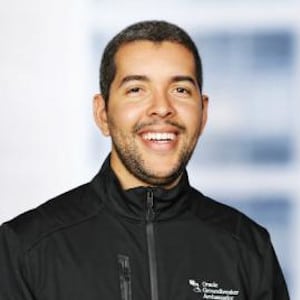
Otavio Goncalves de Santana
SouJava/Platform.sh
Otavio Goncalves de Santana
Otávio is a passionate software engineer focused on Java technology. He has experience mainly in persistence polyglot and high-performance applications in finances, social media, and e-commerce.
Otavio is a member of both Expert Groups and Expert Leader in several JSRs and JCP executive committee. He is working on several Apache and Eclipse Foundation projects such as Apache Tamaya, Eclipse JNoSQL, Eclipse MicroProfile, JakartaEE. A JUG leader and global speaker at JavaOne and Devoxx conferences. Otavio has received recognition for his OSS contributions such as the JCP Outstanding Award, Member of the year and innovative JSR, Duke’s Choice Award, and Java Champion Award, to name a few.
Jakarta EE – ask the Experts
Modern Data Streaming and Processing with Apache Kafka and NoSQL
Modern microservice-based architecture needs to exchange data in a fast and reliable way. The use of distributed streaming platforms such as Apache Kafka makes the job easier, but it’s often not enough. Applications also use NoSQL databases to store information that comes from multiple sources, so it makes perfect sense to use Kafka and NoSQL to create a distributed streaming and processing pipeline between applications. This hands-on lab explores such an architecture, deploying applications with Oracle Cloud and Jakarta EE technologies – Oracle NoSQL, Kafka, and JNoSQL – that are used to connect to the database and receive Kafka messages as CDI events.
Jakarta NoSQL: Meet the first Jakarta EE specification in the Cloud
Jakarta NoSQL is the first specification of the new era of Java EE now in the Eclipse Foundation home as Jakarta EE. The goal of this specification is to ease integration to Java applications with a standard API that supports more than 30 NoSQL vendors and rising. This presentation will show Jakarta NoSQL with MongoDB and introduce an easy way to move your application to the cloud age.
Jakarta EE Meets NoSQL at the Cloud Age
Let’s be honest: the amount of data collected by applications nowadays is growing at a scary pace. Many of them need to handle billions of users generating and consuming data at an incredible speed. Maybe you are wondering how to create an application like this? What is needed? What benefits can you take from this reality to your project? This session shows how Jakarta EE can meet these needs when you’re working with NoSQL databases in the cloud. It’s the same approach used by some of the biggest companies in the world to store, analyze, and get results from really crazy amounts of data. No matter your project size, you can take it to the next level today.
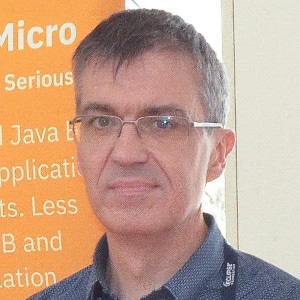
Rudy De Busscher
Payara Services
Rudy De Busscher
Rudy loves to create (web) applications with the Java EE platform and MicroProfile implementations and is currently working for Payara Services Limited in the Service Team. He helps customers, writes technical content, is part of some MicroProfile implementations and advocates the Payara Products in various ways.
He is active in the IT industry for more than 20 years and created many applications for customers. He is also a big fan of OpenSource and helped in various OpenSource projects like DeltaSpike, PrimeFaces, and Apache Myfaces. He is also passionate about Web Application Security using OAuth2, OpenID Connect, and JWT. He maintains the Octopus OpenSource project and is a member of the Jakarta EE Security API team.
Transactions in your micro-services architecture
How can you make different pieces of your unit of work consistent in the distributed setup of your micro-service application?
You associate the term transaction probably with a database, but the data source can be anything including a database in the micro-service world.
The MicroProfile Long Running Actions specification is based on sagas and the OASIS LRA transaction model specification. It defines the framework to guarantee the eventual consistency requirement using compensating actions for example.
This session will explain you the challenges and concepts of the MP LRA framework. And of course, you can see it in action with various demos.
Finally, easy integration testing with Testcontainers
Integration testing is always a difficult area. You need to make sure that all system are connected, data is correctly initialised for each run and test runs do not interfere with each other.
You can do integration testing today, but sometimes these tests are flaky for various reasons or they cannot cover all the cases that you would like to test.
With the Testcontainers project, this issue can be a thing of the past. It allows you to create reliable integration tests covering a wide range of scenarios like database usages, micro services interaction and GUI testing. One of the important factors for the success of this framework is the usage of Docker containers to create a reproducible environment for the test.
This presentation shows you the basics of Testcontainers and within demos gives you examples of testing database integration, microservices integration and testing the UI with Selenium.
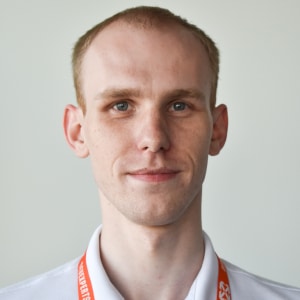
Vladislav Khomyakov
Devexperts
Vladislav Khomyakov
After a decade as an expert in software engineering and information security, Vlad has been specializing in iOS development for the past three years and has advanced knowledge of Swift and Objective-C. Vlad is a guru of FinTech software development and is passionate about exploring different architectural approaches. He’s committed to finding new ways to make developers’ life more manageable, writing elegant, well-designed, and efficient code that is in line with modern iOS development trends. All of his hobbies are connected to music, Vlad enjoys playing the guitar and drums as well as doing vocal and sound recordings.
Take no objections to Java for iOS
To a certain extent you can reuse the code when building mobile applications both for iOS and Android. Ideally, you want to reuse as much as possible to save time. In client-server apps, shared logic can be moved to the server-side, and most of the time, it’s acceptable. But what if it’s not in favor of the UX? What if it’s the kind that can’t be moved? What if you don’t even have a server? Can you optimize, or is it time to double the work and time spent fixing bugs to account for different platforms?
This is where J2ObjC comes into play. J2ObjC is an open-source tool from Google that can translate source code written in Java into Objective-C. This way, Java source can become a part of the iOS builds.
Devexperts have been tailoring code translation from Java to ObjC for years, and this approach is integrated deeply into our development process. We’re here to inspire you to give it a try yourself by showcasing some of our biggest wins with J2ObjC. The road ahead is scary. Fear not, we’ve got the painkiller for easily integrating J2ObjC into the development pipeline.
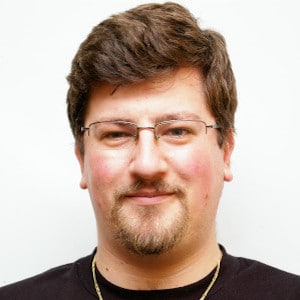
Kaloyan Dimitrov
VMware
Kaloyan Dimitrov
Senior software engineer at VMware with over ten years of experience, yes, I know, that is not so much and passion for travel. If you want to know more about my professional life, feel free to stalk me on LinkedIn but if you want to see my passion in action my travel blog.
Reactive, one year later – a case study
If you have been on a Java conference in the past several years, there is no way you haven’t heard about Reactive. This talk is a case study of the project I have been working on during the past year (and a half). It will show you our journey through a new framework, technology, and mindset. Because, as everybody will tell you, Reactive requires a different mindset. In the end, you will, hopefully, get a better idea of what Reactive is and for what it is good or bad.
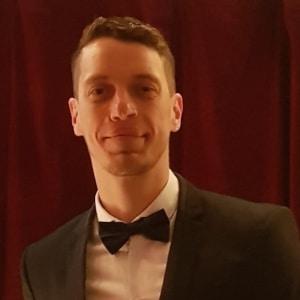
Andres Cespedes Morales
Mulesoft
Andres Cespedes Morales
I’m a software craftsman, Java evangelist, and professional Instructor working with large enterprises to improve their teams and the way they develop software. (OSS contributor, JCP Member)
7 Architecture Patterns Implemented in Java
Often times, you can find explanations about software design and architectural patterns but it is not that common to see those patterns implemented along with its definition.
In this session, we’re going to learn some of the top 7 architectural patterns for microservices implemented in Java, with frameworks as Spring, Microprofile, and many other open-source tools.
These patterns are very well suited for a microservices architecture, such as Event-based microservices, distributed transactions (sagas), service discovery, asynchronous inter-process communication using gRPC, distributed tracing, and much more.
10 Steps to become a Software Architect
Have you ever thought about becoming a Software Architect? Is it still a bit unclear what is needed to do it so? Also, why would it ever be good to step into Software Architecture?
In this session, we’re going to learn the what, why, and how of Software Architecture from a point of view based on lessons, academics, and the enterprise, and also how you can transform yourself from a developer role into an architect one, describing the different steps and challenges that you may find throughout this journey.
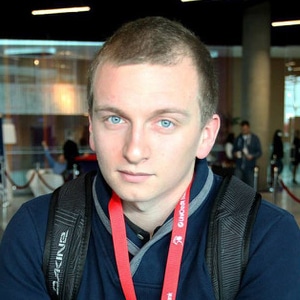
Tom Mladenov
Solution Architect Tide
Tom Mladenov
As a Solution Architect at Tide, Tom spends most of his time designing different components of the core product of the fintech challenger.
Apart from that he reads, experiments, teaches and spreads the word for other exciting technologies such as Flutter, Kotlin, Go, Firebase and Google Cloud Platform.
Outside the office, he prays for deep snow, a waxed snowboard and a working lift.
Scaling up a banking challenger with event driven architecture
Microservices have saved us from the crushing pain of monoliths, only to raise a whole raft of questions about how microservices can work together to achieve meaningful features for end users.
One approach promoted by some famous names (LinkedIn, Netflix etc.) is to adopt a message driven architecture. This talk will introduce message driven architecture and discuss some of the advantages, risks and how to mitigate them, as well as some patterns which can help you take full advantage of the shift. We’ll also touch on Tide’s experience of moving to messaging as part of scaling up our development organization.
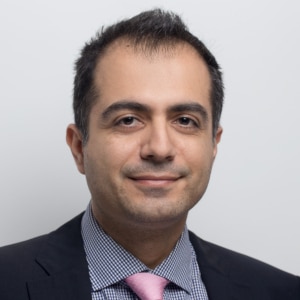
Ioannis Kolaxis
Atos
Ioannis Kolaxis
Ioannis Kolaxis is a Software Architect at Atos Greece, developing innovative software products for Unified Communication and Collaboration (UCC). He likes sharing his knowledge & experience with the developer community, speaking at conferences like Oracle Code One 2019 (San Francisco, USA) & local meetups, such as the Java Hellenic User Group (Athens, Greece) & Thessaloniki Java Meetup (Thessaloniki, Greece). He frequently writes articles on LinkedIn and Developer Zone, focusing on Software Engineering topics, like Java and Software Quality. He is certified as a European Professional Engineer (EUR ING), and a Professional Scrum Master (PSM I). In 2017, he was awarded by Atos with the title of “Senior Digital Expert”, as a recognition of his technical expertise and professional accomplishments.
How to Improve the Quality of Your Application (I Wish I’d Known This Earlier!)
Do your customers keep complaining about bugs in your software application? Does it take you too long to fix bugs and implement new features? If yes, then you may have issues with the quality of your application. This session provides practical advice on how you can improve the quality of your software application. The speaker shares with you all the lessons he learned while working as a software engineer for a big, complex enterprise application, discussing which techniques worked and which ones failed and providing actual examples and metrics from that application. It’s assumed that you have already experienced the struggle of maintaining a defective software application and that you aspire to building software of top quality.
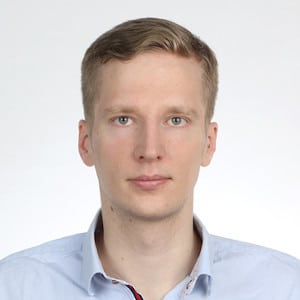
Filip Łazarski
HL Tech
Filip Łazarski
Graduate of Warsaw University of Technology. Has almost 7 years of experience in software engineering. Open source contributor, author of articles and speaker.
Contract testing in microservices environment with Judge-d
Typical microservices environment consists of many services. In order to provide business value, they need to cooperate. Therefore, it is crucial to ensure that the services are always able to communicate with each other. What if by accident a developer introduces a change to one service, which will make inter-service communication impossible? It is necessary to prevent such situations from happening. Therefore, HL Tech developed an open source project called Judge-d. Judge-d verifies if a change introduced to a service would pose a threat to communication within any environment.
In my presentation I briefly discuss threats to communication in microservices environment, contract testing as a typical solution and how Judge-d realizes contract testing. I describe how REST and JMS contracts are represented in Judge-d. I will present possible alternatives and their disadvantages as well.
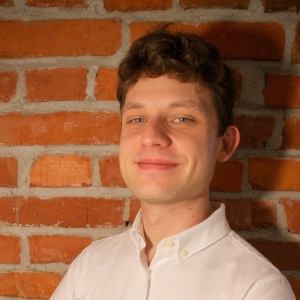
Rafał Leszko
Hazelcast
Rafał Leszko
Cloud software engineer at Hazelcast, author of the book “Continuous Delivery with Docker and Jenkins”, trainer, and conference speaker. He specializes in Java development, Cloud environments, and Continuous Delivery. Former employee in a number of companies and scientific organizations: Google, CERN, AGH University, and more.
Where is my cache? Architectural patterns for caching microservices
Everybody needs caching! However, where exactly to place it in your system? Inside your application or as a layer in front of it? Inside or outside the container? In the era of Cloud Native and Microservices these questions get even more complicated. In this session I’ll present different architectural patterns for distributed caching: Embedded, Client-Server, (Kubernetes) Sidecar, and Reverse HTTP Proxy Caching.
During this talk you’ll learn:
– What are the design options for including the caching layer
– How to apply caching layer in Istio (and Service Mesh in general)
– How to use distributed HTTP caching without updating your microservices
– Common pitfalls when setting up caching for your system
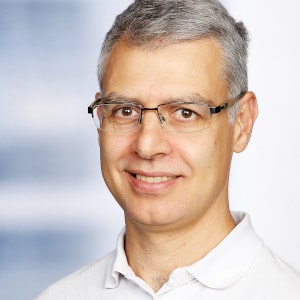
Nicolas Fränkel
Hazelcast
Nicolas Fränkel
Developer Advocate with 15+ years experience consulting for many different customers, in a wide range of contexts (such as telecoms, banking, insurances, large retail and public sector). Usually working on Java/Java EE and Spring technologies, but with focused interests like Rich Internet Applications, Testing, CI/CD and DevOps. Currently working for Hazelcast. Also double as a teacher in universities and higher education schools, a trainer and triples as a book author.
Stream Processing Essentials Training
Take your first steps to understanding and start working with stream processing! By the end of the course, you will be able to build and run distributed streaming pipelines in Java:
- Explain when to use streaming
- Design a streaming application from the building blocks
- Transform, match, correlate and aggregate continuous data
- Scale, deploy, and operate streaming apps
We will also cover the advantages and disadvantages of the stream processing technologies available when approaching real-world problems.
Designing a DSL with Kotlin
Kotlin is one of those “new” JVM languages that are currently rocking the boat. Although it’s made a great impact on Android, it’s equally good on the server side. As Domain-Specific Languages are constrained by the language they run on, Kotlin frees developers from Java fluent builders to propose something better.
Using the Vaadin web framework as an example, I’ll demo how one could design its own DSL with Kotlin.
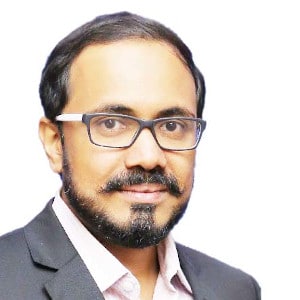
Tamaghna Basu
neoEYED Inc.
Tamaghna Basu
Tamaghna Basu, CTO of neoEYED Inc. is on the mission to www.killthepassword.com to build a safer world with stronger, yet very convenient authentication mechanism for companies and end-users. He is a hacker, speaker, trainer and a developer too. He has more than 15 years of experience in cyber-security domain and worked in large enterprises like PwC, Paypal, Walmart etc. to help them secure their products. His main areas of research include application security and network pen‐testing, incident handling and cyber forensics. Being a software developer earlier, he worked in python, java, .net, ruby etc. and various domains like finance, insurance, gaming etc. He is a frequent speaker/trainer in various conferences like NULLCON, C0C0N, OWASP, ISACA etc. and member of NULL, DSCI and other communities. He also contributed to security magazines like Clubhack and ISACA journal. He has accomplished various other certifications like Cyber Crime Investigation, Diploma in Cyber Law, OSCP, GCIH etc.
Preventing Identity Thefts and Impersonation Frauds using AI and Behavioral Biometrics
- Developing a risk framework with cognitive security;
- The technological expertise available to detect these anomalies and patterns.


Andrew Lombardi
Mystic Coders

Andrew Lombardi
Andrew Lombardi is one of a new breed of businessmen: the enlightened entrepreneur. He has been writing code since he was a 5-year old, sitting at his dad’s knee at their Apple II computer. Having such a deep affinity for the computer model, it is no surprise that at the age of 17 he began to delve deeply into the inner workings of the human mind. He became a student of Neuro Linguistic Programming and other mind technologies, and then went on to study metaphysics. He is certified as an NLP Trainer, Master Hypnotherapist and Time Line Therapy practitioner.
Using all of his accumulated skills, at the age of 24, Andrew began his consulting business, Mystic Coders, LLC. Since the inception of Mystic in 2000, Andrew has been building the business and studying finance and economics as he stays on the cutting edge of computer technology.
The Three Keys of Remote Team Success
It has become increasingly easy to connect with talent across the globe. With the ubiquitous nature of the internet in increasingly remote locations, your team may even consist of people you’ve never met. While this is enticing, it comes with it’s own set of challenges. Learn the three keys to success as a remote team and utilize effective tools for achieving a smooth means of delivering solutions for your customers.
Privacy in the Age of Analytica
You are the product. The digital age has brought us many conveniences with the very real cost of our privacy as payment. The terms and conditions that none of us read have allowed companies to build a persona of who we are, and possibly better than we even know ourselves. Learn what your privacy looks like today, and how you can take very real steps toward reclaiming the anonymity that allows you to move through the world without being constantly sold.
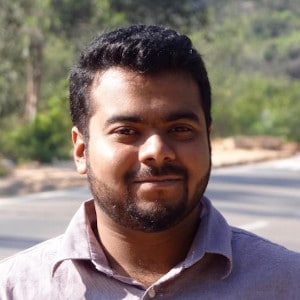

Subho Halder
AppKnox

Subho Halder
Subho Halder is the Co-Founder and CTO at Appknox, a mobile security company that helps developers and companies to build secure mobile application. He looks after the security technologies and the product development to ensure we are always ahead in our game. Subho has previously developed AFE (Android Framework for Exploitation) and has done in-depth research and analysis on mobile platforms. He has been also listed multiple number of times in various Hall Of Fame for finding out critical security vulnerabilities in Google, Apple, Facebook, Microsoft, and many more. He has presented many talks and conducted workshops at conferences like Black Hat, Defcon, ToorCon, SysCan, ClubHack, NullCon, OWASP AppSec, RSA Conference.
Securing your Mobile Apps during development
Mobile adoption is strategic in every industry today. Although it can be a great catalyst for growth, the security risks that come with it cannot be overlooked. Even though this fact is established, many companies are still not following some of the mobile application security best practices. The goal of this is to raise awareness about application security by identifying some of the most critical risks facing organizations during development.
We will be covering from basic OWASP top 10 security issues to live demos on different use-case scenarios on how a hacker can hack your application, and how to prevent them
We will also be talking about how to set your own mDevSecOps framework to make sure you can catch those security issues early in your development cycle.
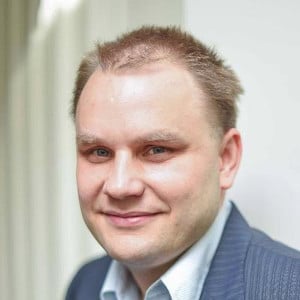

Fabien Vauchelles
CTO Zelros

Fabien Vauchelles
CTO and Co-Founder Zelros
Machine Learning for the Busy Developer
Random Forest, Cross Validation, Clustering, … a whole new vocabulary for a developer, who is already busy!
When you have a closer look, Machine Learning is very simple: you prepare the data, you assemble the datasets, and you model the algorithms. It’s mostly experimentation.
Come and discover how a machine predicts the future!
Through examples and live-coding, we will see:
– how to build our datasets?
– how to choose the right algorithm?
– how to evaluate the performance of a predictive model?
Now, Machine Learning will be your best friend!
How to organise a Datascience competition?
For the last 4 years, we organized the Data Science Olympics. This competition happens every year, on multiple locations and lasts only 2 hours! Last year, we gathered 1000 datascientists in Berlin and Paris.
If you are asking yourself theses questions:
– Why should you come to a Data Science competition?
– How can I win this kind of competition?
– How can I organise a machine learning challenge?
This talk is for you!
We will share with you our experience on the past 4 year about the challenges, the solutions and you will discover some easy tricks!
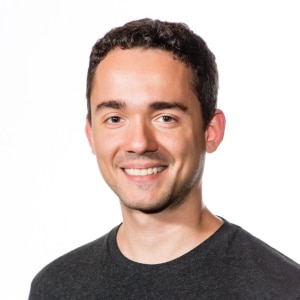

Miro Cupak
DNAstack

Miro Cupak
Miro is a Co-founder and VP Engineering at DNAstack, where he builds a leading genomics cloud platform. He is a Java enthusiast with expertise in distributed systems and middleware, passionate about genetics and making meaningful software. Miro is the creator of the largest search and discovery engine of human genetic data, and the author of a book on parallelization of genomic queries. In his spare time, he blogs and contributes to several open-source projects.
How we’re searching the world’s genetic data
The sensitive nature of genetic data causes a major concern in genetics – a lot of life-saving information, despite having been collected, is inaccessible. Data discovery and sharing has long been believed to be the key making new breakthroughs.
In this session, we tell the story of developing a standard for search of genetic data and its implementation in the form of the world’s largest search and discovery engine of human genetic data today. The effort is a result of years of collaboration between developers, researchers and scientists on a global scale, and the flagship project of the Global Alliance for Genomics and Health, a coalition of over 500 institutions focused on standardizing sharing of genetic data.
We’ll go from challenges, architecture and technologies behind this open-source project, through the development of a standard for genetic data search, to fun statistics capturing what people are searching for in the system.
Come and learn about the technical decisions that allowed us to scale and disrupt the perception of genetic data!
Exploring reactive programming in Java
When Java 8 was first introduced, it revolutionized the way Java applications were written by providing the core constructs for asynchronous programming and handling data streams. With Java 9-12, these capabilities were extended to the level that allows us to write truly modern, reactive applications with the JDK.
In this live-coding session, we explore the building blocks or reactive systems available in the JDK today, which create 8 levels of reactive programming. We specifically focus on JDK 9-12 features, such as updates to the Stream and CompletableFuture APIs, Reactive Streams publish-subscribe framework, HTTP/2 client, and more.
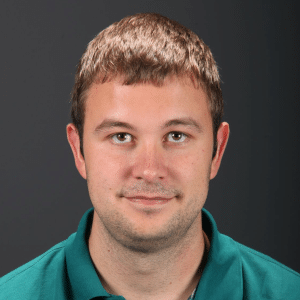

Nikolay Stoitsev
Uber

Nikolay Stoitsev
Nikolay Stoitsev is a software engineer at Uber where he builds scalable and fault-tolerant backend distributed systems. He is also a teaching assistant at Sofia University in Sofia, Bulgaria. The projects he is working on allow 3 million people around to world to earn money on their own schedule.
3 lessons on effective communication for engineers
Effective communication is one of the most important skills we need. It greatly improves our productivity. And multiplies the positive impact that we have on the products we build and the people we work with. In this talk, we are going to explore three lessons on better communication. First, we’ll start with key principles for building trust and good relationships with the people around us. Then, we’ll see why and how to manage expectations. And we’ll explore how requirements facilitation can make our work easier. We are also going to see how to apply code reviews to our communication and scale it to amplify our impact. And most importantly, we’ll go over some real-world examples of how to apply these lessons in our everyday work to become better engineers.


Werner Keil
Creative Arts & Technologies

Werner Keil
Werner Keil has worked for more than 25 years as project manager, software architect, analyst and consultant on leading-edge technologies for Banking, Insurance, Telco/Mobile, Media and Public sector.
Among his earlier clients are Sony where Werner designed and implemented micro-format based tags for Sony Music.
He develops enterprise systems using Java, Java EE, Oracle or IBM, does Web design and development using Adobe, Ajax/JavaScript or dynamic languages like Ruby, PHP, etc.
Besides work for major companies he runs his own creative, talent and consulting agency Creative Arts & Technologies. In his spare time, he runs and supports open-source projects, writes song lyrics, novels, screenplays and technical articles. He is committing member of Eclipse Foundation, Apache Foundation and the Java Community Process, including his role as JSR-363 Spec Lead and Executive Committee Member.
Jakarta EE Meets NoSQL at the Cloud Age
Let’s be honest: the amount of data collected by applications nowadays is growing at a scary pace. Many of them need to handle billions of users generating and consuming data at an incredible speed. Maybe you are wondering how to create an application like this? What is needed? What benefits can you take from this reality to your project? This session shows how Jakarta EE can meet these needs when you’re working with NoSQL databases in the cloud. It’s the same approach used by some of the biggest companies in the world to store, analyze, and get results from really crazy amounts of data. No matter your project size, you can take it to the next level today.
Jakarta EE – ask the Experts
Securing E-Health and E-Government with Java
The EU increases its cooperation on cyber defense to strengthen its resilience to cyber-attacks through the EU Cybersecurity Act and certification of products, services or applications. To be as well prepared as possible against hacker attacks or the distribution of “fake news”, fake documents and information. Like a One Trillion Amazon refund or fake tax returns. The IT industry may use this mechanism to certify products like connected vehicles, government services or smart medical devices. Due to its platform independence, Java plays an important role, especially in web, cloud or enterprise environments.
This session introduces the DSS Framework and solutions based on it, such as Digidoc4J. DSS (Digital Signature Services) is a Java framework for the creation and validation of electronic signatures. DSS supports the creation and validation of interoperable and secure electronic signatures in accordance with European legislation, in particular the eIDAS Regulation, as well as IT standards like OASIS DSS.
The framework may be used anywhere from embedded devices to desktop applications, like practice management software or services in the cloud wherever a JVM runs. It supports a variety of document formats like XML, PDF, Word, Plain Text or compressed archives, as well as various digital signatures, including XAdES, CAdES, PAdES or ASiC. It provides an abstraction layer over low-level signature libraries like Bouncy Castle, OpenPDF, Apache PDFBox or Sanctuario. DSS is used in many European countries for document exchange and security, e-health or e-government, with digital ID cards in more than a dozen countries across the European Economic Area.
An overview of the DSS Framework is followed by a live demo, showing how different documents can be signed and their signature subsequently verified.
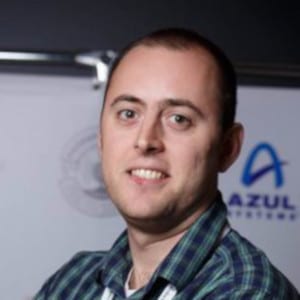

Martin Toshev
Resolve Systems

Martin Toshev
Martin is an IT consultant, Java enthusiast and has been heavily involved in the activities of the Bulgarian Java User group (BG JUG). His areas of interest include the wide range of Java-related technologies (such as Servlets, JSP, JAXB, JAXP, JMS, JMX, JAX-RS, JAX-WS, Hibernate, Spring Framework, Liferay Portal and Eclipse RCP), cloud computing technologies, cloud-based software architectures, enterprise application integration, relational and NoSQL databases. You can reach him for any Java and FOSS-related topics (especially Eclipse and the OpenJDK). Martin is also a regular speaker at Java conferences.
Building highly scalable data pipelines with Apache Spark
Many modern world software systems face the need to process increasing volumes of data in a reasonable amount of time. To achieve that one can think of different ways to build a highly-scalable data pipeline which is a non-trivial activity especially in terms of the different operations, performance through various optimizations and scalability that need to be taken into consideration during the implementation. In order to avoid that we typically fall back to a framework like Apache Spark that provides the necessary primitives to build such a data pipeline. During this topic we will demonstrate how does Apache Spark achieves that by implementing a realtime event management system that aggregates events from a number of data sources in a single application implemented with the help of Apache Spark.
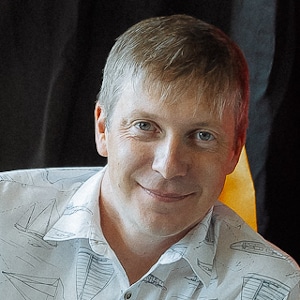

Serhii Romaniuk
DataArt

Serhii Romaniuk
About Serhii:
- 6+ years of professional experience in IT industry specializing in Quality Assurance;
- Thorough experience in manual and automated testing and setup of Quality Assurance processes;
- Current areas of professional interest: Quality Assurance, Project Management, Team Leadership.
QA Automation evolution. The new SEiT role breaks borders and limitations.
Insatiable market hunger for the new features and the ever-increasing development speed, as well as the complexity of the applications being created, require the team to make the product testable by design.
How to manage application quality with limited resources?
How to make auto tests decrease business risks?
How to create optimal auto test coverage and naturally maintain it throughout the entire application development cycle?
How to create the most understandable and maintainable user documentation?
How to build auto tested release process?
How much does full test coverage cost?
Get the answers to these and other important questions in this presentation.
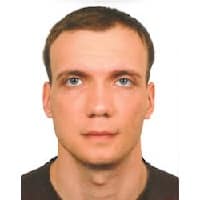

Roman Tsypuk
Lohika

Roman Tsypuk
Oracle Certified Java Expert. Contributes as a speaker on meet-ups, communities and conferences, mentors colleagues, has deep experience in telecom area and likes ham radio beyond programming. Roman is the most concentrated on topics about Spring, JVM performance, security, distributed systems, microservices and docker.
Organizer of Lohika’s Java community – weekly meetings with live coding session, new framework investigation, sharing experience.
Program committee member of morning@lohika community – monthly meet-up events for developers.
AWS Alexa: How to talk with your Smart Home Devices
AWS Alexa is a new Amazon web service that allows you integrate voice control into existing systems, by sending voice commands to control your smart home/ IoT devices, cars or integrated SW. I will explain it architecture, show how to develop custom skill for AWS Alexa from the scratch and run it using AWS Echo Dot. Also we will talk about AWS Lambdas, as they are used under the hood to operate with logic and commands.


Thodoris Bais
Utrecht Java User Group

Thodoris Bais
Thodoris works as a Scrum Master for ABN Amro bank and contributes to the prosperity of the (software) community in several ways. He is the Founder & Leader of Utrecht Java User Group, which counts more than 2000 members and has hosted exceptional speakers (where among others, James Gosling and Uncle Bob). Besides, he serves the Expert Group of JSR-385 and helps new communities to make their first steps. Previously: 5 years of Software Engineering, 2 years as a Technical Author, Open-source contributor. His views are expressed via his Twitter handle @thodorisbais
Developer Career: Own it
Software Engineering is undoubtedly one of the best-paid jobs nowadays, which implies that the market for Software Engineers is large enough for all levels of expertise.
However, when a market is large it’s not always that easy to find good engineers; because in the end, this is what companies want, exceptional engineers.
Are you happy enough with your current position? Do you often find yourself in dilemmas like “am I doing the right thing?”, “how can I improve my skills?”, “how could I be seen as a strong technical person?” ?
Besides answering the aforementioned questions, this session will actually help you to drive your career in the direction you want, improve your productivity and make the right decisions at the right time.
Securing E-Health and E-Government with Java
The EU increases its cooperation on cyber defense to strengthen its resilience to cyber-attacks through the EU Cybersecurity Act and certification of products, services or applications. To be as well prepared as possible against hacker attacks or the distribution of “fake news”, fake documents and information. Like a One Trillion Amazon refund or fake tax returns. The IT industry may use this mechanism to certify products like connected vehicles, government services or smart medical devices. Due to its platform independence, Java plays an important role, especially in web, cloud or enterprise environments.
This session introduces the DSS Framework and solutions based on it, such as Digidoc4J. DSS (Digital Signature Services) is a Java framework for the creation and validation of electronic signatures. DSS supports the creation and validation of interoperable and secure electronic signatures in accordance with European legislation, in particular the eIDAS Regulation, as well as IT standards like OASIS DSS.
The framework may be used anywhere from embedded devices to desktop applications, like practice management software or services in the cloud wherever a JVM runs. It supports a variety of document formats like XML, PDF, Word, Plain Text or compressed archives, as well as various digital signatures, including XAdES, CAdES, PAdES or ASiC. It provides an abstraction layer over low-level signature libraries like Bouncy Castle, OpenPDF, Apache PDFBox or Sanctuario. DSS is used in many European countries for document exchange and security, e-health or e-government, with digital ID cards in more than a dozen countries across the European Economic Area.
An overview of the DSS Framework is followed by a live demo, showing how different documents can be signed and their signature subsequently verified.
Jakarta NoSQL: Meet the first Jakarta EE specification in the Cloud
Jakarta NoSQL is the first specification of the new era of Java EE now in the Eclipse Foundation home as Jakarta EE. The goal of this specification is to ease integration to Java applications with a standard API that supports more than 30 NoSQL vendors and rising. This presentation will show Jakarta NoSQL with MongoDB and introduce an easy way to move your application to the cloud age.
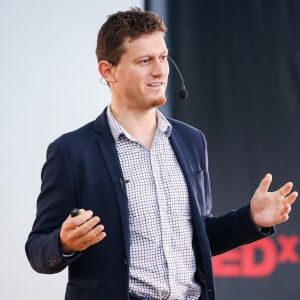

Svetlin Nakov
SoftUni

Svetlin Nakov
Svetlin Nakov (http://nakov.com) Svetlin Nakov has 20+ years of technical background as software engineer, project manager, consultant, trainer, and digital entrepreneur with rich technical experience (blockchain, Web development, information systems, databases, cryptography, C#, Java, JS, PHP, Python). Svetlin Nakov is a regular speaker at hundreds of conferences, seminars, courses and other trainings and holds a PhD degree in computer science. He is author of 15 books about computer programming and software technologies, lives in Sofia, Bulgaria and works as an passionate trainer and inspirer at SoftUni.
Mobile Device Security
In this talk Dr. Svetlin Nakov will review the biggest cybersecurity threats for the modern mobile devices and will demonstrate how easily an Android mobile phone can be hijacked by non-professional attacker, using trivial remote administration tools and screen recording apps from the official Android app store. Finally, the speaker will give recommendations and best practices for improving the security of iOS and Android mobile devices.
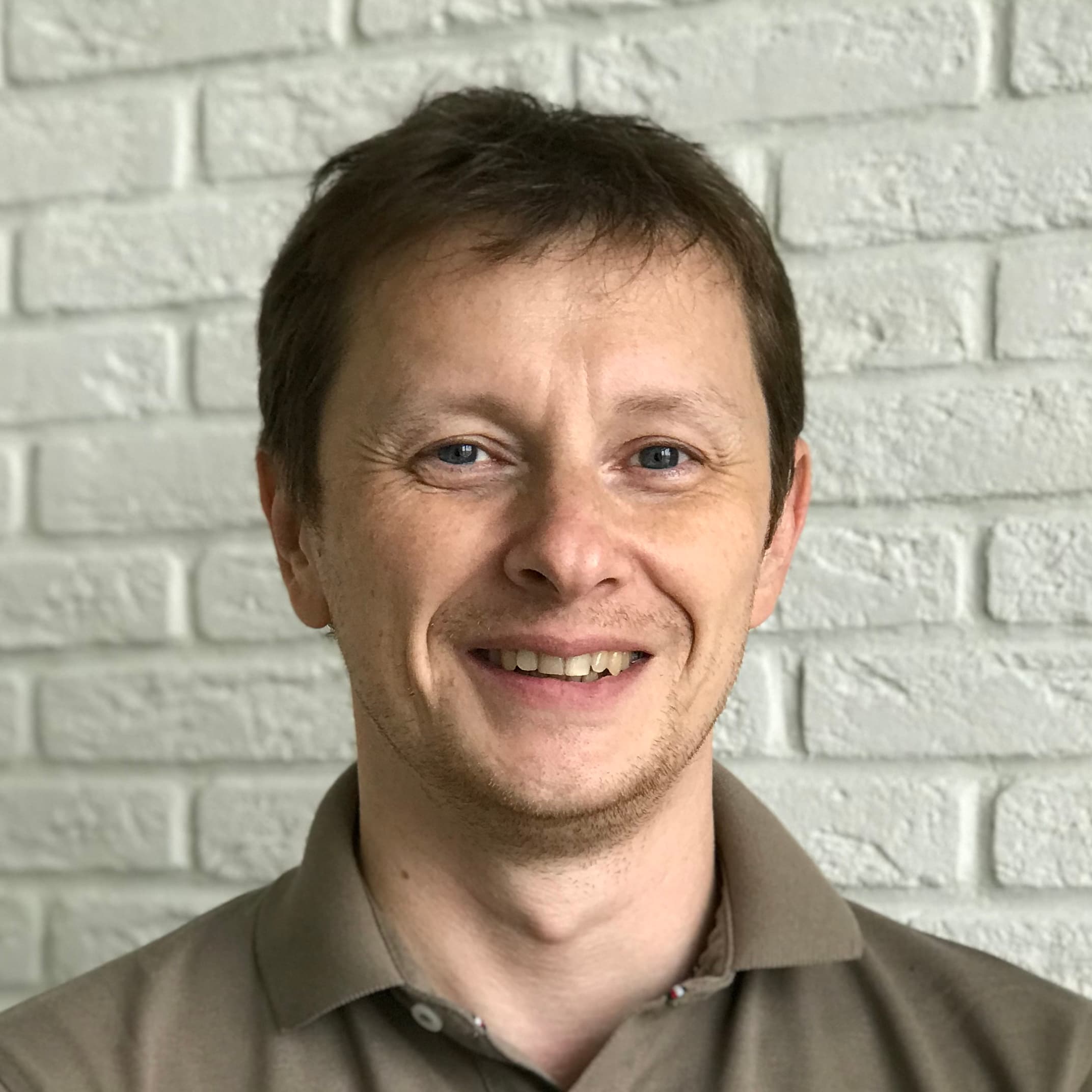

Denis Tsyplakov
DataArt

Denis Tsyplakov
Denis Tsyplakov is a professional software developer and architect, who started coding in the late eighties as a hobby. By mid-nineties, the demand for software engineers drove him to turn his hobby into profession. Although Denis is a master of a variety of programming languages, his favorite one is Java because of its power, flexibility and elegance. Since 2006, Denis has been working at DataArt as a senior solution architect. He designs complex systems, improves application architecture, and focuses on performance, scale, extensibility, and total cost of ownership. And he does mentoring of other junior architects too. Denis spends his free time with the family, his lovely wife and two daughters; he enjoys hiking and sci-fi books.
Typical bugs in technical architecture of Java based services
There is a joke. A fireman is complaining, “What the hell, each and every time people call us to say that their house is on fire”. As a solution architect in DataArt, I can say that 80% of my job is to help different companies to solve problems with their systems. So, when I see a project, it is usually “on fire”. Sometimes problems lie with requirements, sometimes with management, sometimes they are caused by a wrong choice of tools. But lots of problems lie with the technical architecture. I want to discuss with you several most typical problems in the technical architecture that I have seen in more than half of the projects.


Marc Gregoire
Nikon Metrology

Marc Gregoire
Marc Gregoire is a software architect from Belgium. He worked 6 years as a consultant for Siemens and Nokia Siemens Networks on critical 2G and 3G software running on Solaris for telecom operators. This required working with international teams stretching from South America and the United States to Europe, the Middle East, Africa, and Asia. Now, Marc is a software architect at Nikon Metrology (www.nikonmetrology.com), a division of Nikon and a leading provider of precision optical instruments and metrology solutions for 3D geometric inspection.
His main expertise is in C/C++, and specifically Microsoft VC++ and the MFC framework. He has experience in developing C++ programs running 24/7 on Windows and Linux platforms: for example, KNX/EIB home automation software. In addition to C/C++, Marc also likes C# and uses PHP for creating web pages.
Since April 2007, he has received the annual Microsoft MVP (Most Valuable Professional) award for his Visual C++ expertise.
Marc is the founder of the Belgian C++ Users Group (www.becpp.org), author of “Professional C++” 2nd, 3rd, and 4th editions, published by Wiley/Wrox, co-author of “C++ Standard Library Quick Reference” (Apress), technical editor for numerous books for several publishers, and a member on the CodeGuru forum (as Marc G). He maintains a blog at www.nuonsoft.com/blog/, and is passionate about traveling and gastronomic restaurants.
Writing Modern C++ Code
Since the release of C++11 in 2011, modern C++ code does not look at all like C++ code written before 2011. If you know the old C++ language, then you will have to unlearn certain things to write truly modern C++ code. Recent versions of the C++ standard have introduced new features to make your live as a developer easier. These features allow you to write code that is less error-prone, that is more easy to read and understand, that allow you to more easily use other aspects of the languages such as the Standard Library algorithms, that make it easier to write multithreaded code, and so on. This session will give an overview of these modern C++ features.
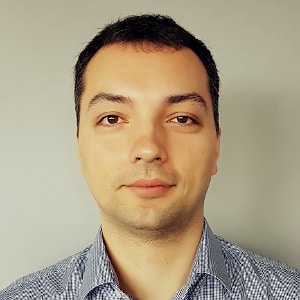

Zdravko Kostadinov
Kaufland IT Hub

Zdravko Kostadinov
Zdravko is a confident, responsible and proactive software engineer with 5+ years of experience in various challenging software projects. I possess excellent communicational, organizational and analytical skills. I have significant knowledge in front-end development with CSS and JavaScript as well as in back-end development with Java technologies. I am a great team player and a valuable part of any development team.
Reactive backend with RDBMS
TBD


Rumen Papukchiev
Kaufland IT Hub

Rumen Papukchiev
Rumen is a skilled Java developer with more than 10 years of experience. He’s been developing on Spring, JavaEE, Angular and many more technologies. Currently he is facing the challenge of leading a team that creates the backend of an application that will be used across all Kaufland stores.
Reactive backend with RDBMS
TBD
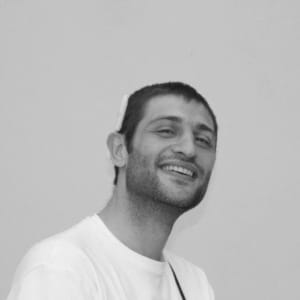

Stanimir Iliev
Kaufland IT Hub

Stanimir Iliev
Stanimir is a JavaEE developer with plenty of experience in creating web applications. He has joined IT Hub Kaufland in 2017. Currently he is building a complex backend architecture in an international project. In his free time he is doing marathons.
Reactive backend with RDBMS
TBD
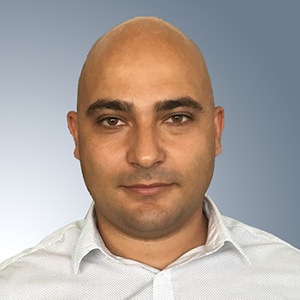

Ivan Mashalov
Kaufland IT Hub

Ivan Mashalov
Ivan is a Java developer with experience in different industries like health care, banking, FinTech. Currently working at Kaufland Service IT Hub. Passionate about new and innovative technologies. Always keen to learn and help.
Reactive backend with RDBMS
TBD
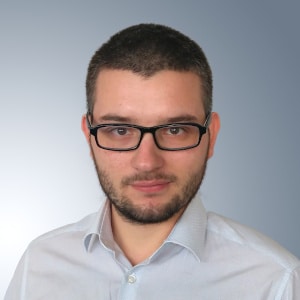

Georgi Manev
Kaufland IT Hub

Georgi Manev
Georgi is a skilled Java developer with a lot of experience in the area of web technologies. He is ацтижелъ developing in Spring Boot and also mentoring the trainees in the company. Georgi is working in IT Hub Kaufland since 2017. Besides work he shares a big passion for mountains.
Reactive backend with RDBMS
TBD
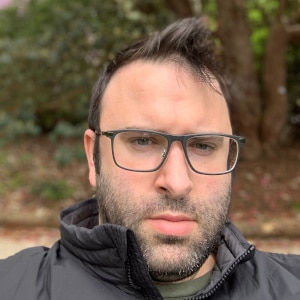

Alan Cooke
Zendesk

Alan Cooke
Alan is currently working at Zendesk where he leads the mobile engineering teams working on both Apps and SDKs. He has a great passion for software engineering and building high quality applications that are both functional but also beautiful. Building on his 10+ years of commercial software development, has a wide breath of knowledge which include highlights like building the first prototypes at MasterCard of the system which powers Apple Pay and Android Pay.
Robots, the best testers you will ever build
The talk will bring attendees on a journey from the current out of the box approach to UI automation testing, talk about the pitfalls and then introduce through Swift, the Robot pattern. The Robot pattern is a pattern commonly applied to test automation which allows an abstraction layer that is easy to write and easy to understand, so much so that even a product manager could write the tests. Moving beyond the basics of the pattern and show it running in action with a real app, we will evolve the pattern to leverage the latest function builders offered in Swift 5 to make our tests even more expressive, terse and easy to write.
Attendees will leave, having a new found love for test automation and how to put a strong pattern to use in their own code bases.
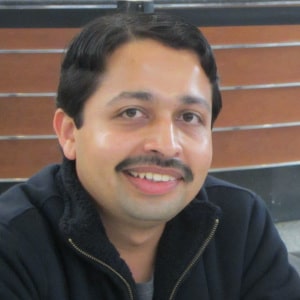

Naresha K


Naresha K
Naresha works as Technical Excellence Coach and Cloud Transformation Catalyst. He works with the developers to improve their professional practices to get better at developing maintainable applications that deliver business value. He also helps teams to architect solutions for the cloud and migrate applications to cloud platforms. He has been developing enterprise software for more than 12 years.
Naresha is the founder organizer of Bangalore Groovy User Group. He has been a speaker at several conferences including GR8 Conf EU, Functional Conf, GR8 Conf India, Grails Conf, GIDS, Eclipse Summit and Selenium Conf.
Effective Java with Groovy & Kotlin – How Languages Influence Adoption of Good Practices
‘Effective Java’ is probably the best book ever written for Java programmers. It presents the most effective ways of using language. Since Groovy and Kotlin run on JVM, most of the suggestions from Effective Java are equally relevant for Groovy and Kotlin developers. However, one has to take caution before using the corresponding Java implementations. Moreover, these languages provide out of the box constructs for many of the recommended practices which can boost developer productivity.
In this talk, I walk you through code examples that follow these good practices, highlighting the Groovy and Kotlin way of implementing the ‘Effective Java’ suggestions. There are several instances where Groovy and Kotlin take different approaches. As a participant, you walk away appreciating the simplicity with which these JVM languages empower the developers. The talk also provides food for thought – how programming languages can influence their users to adopt good practices.
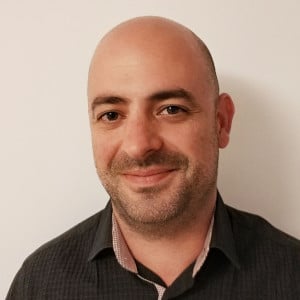

Jeronimo Martinez
DataArt

Jeronimo Martinez
My name is Jeronimo Martinez, I am a software engineer at DataArt. I’ve been writing software for about 15 years for different companies in Spain, Ireland and Poland. On my day-to-day work, I design, build and maintain big enterprise systems and data pipelines. On my spare time, I research new and interesting technologies, mostly related to functional programming, data engineering and machine learning, and then I try to make that somehow leak into my day to day work 😉
Survival guide for maintaining legacy systems
All systems have some degree of legacy, starting from the new one that you are creating just now, up to the one that has been abandoned for years but still keeps one critical active user somewhere. At some point in your career as a developer, you will inevitably end up maintaining a system that you didn’t write, and which you don’t know much about. What are your options? Are there tools and techniques that can make you work easier? Yes, there are! In this talk I’ll go over different approaches that will improve your experience dealing with a legacy system, and also, a set of recommendations for preventing future systems becoming legacy.
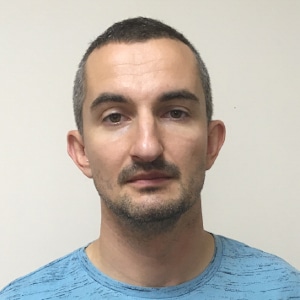

Tsanko Stoykov
TechnoLogica Ltd

Tsanko Stoykov
I have always been working for TechnoLogica Ltd.
If You measure experience in years, then mine score is 12+. I see my work as developing practical solutions to various chalenges. Main focus for me is reliability and speed in data processing. My best programing languages are PL/SQL, Java and SQL. My sort list of most encountered topics is – XML, JSON, document signatures, data masking, certificates, stream processing, big data, formula evaluation etc.
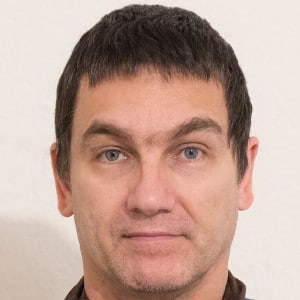

Radoslav Markov
Bastun Media LLC

Radoslav Markov
Radoslav Markov is well known across digital media community. He is first internetist in Bulgaria (since 1987). Also he is a pioneer of digital cinema, digital restauration and scientific technologies with application in media, especially audiovisual restauration. He is frequent speaker at biggest conference for TV and cinema technology IBC Amsterdam (https://show.ibc.org/speakers19/radoslav-markov), but also at ARRI Archival workshop,No Time to Wait, Photonex and many other international grade events.
Jazz Singer (1929) in holographic and immersive sound – Why not (or why yes)?
This presentation have two parts. First is possibilities of current scientific achievement with application of computer vision algorithms and ML for restoration of image of the old movies – from digitization to multidimentialisation (holographic) and from mono to immersive sound. Second part is: did we have right to this – legal, ethical, aesthetic, rights and financial problems of doing such perfect improvement of the old audiovisual heritage.
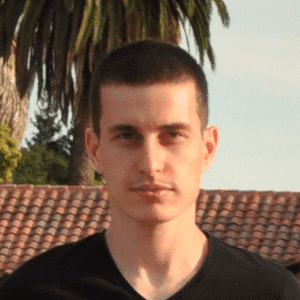

Vasil Chomakov
VMware

Vasil Chomakov
Vasil Chomakov is а Senior Software Engineer at VMware with 10 years of experience in the software industry.
He has specialized in building full-stack solutions for virtual infrastructure management as well as telemetry collection, management and analytics. Vasil possesses an extensive experience as a lecturer at Sofia University, VMware TalentBoost Academy and CoderDojo.
A Web App That Can Fit in a Tweet… Or Building Production-ready Enterprise Java Applications with Spring Boot
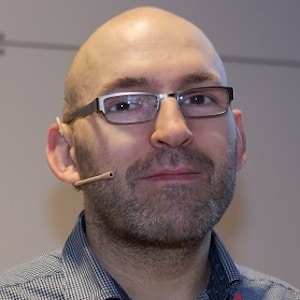

Wlodek Krakowski
refactoring.pl

Wlodek Krakowski
Włodek Krakowski is a team leader and independent technical trainer. Also a developer if the time allows. His main interest is taking care of delivering valued software from different perspectives. These are how people take care of quality of code, how people work together towards providing business value, how people help to grow each other and how people are managed. Currently he works as IT Team Leader in Kraków, Poland and delivers technical / refactoring trainings at www.refactoring.pl.
Poker Hands – Refactoring into Chain of Responsibility
Poker Hands are are put into sequential order and the player who holds the highest one wins. Let’s make fun of it then and perform some refactoring of code that identifies what poker figure given player holds. We will transform a set of nested if-else statements into a nice chain of responsibility classes (Straight Flush, Four of a Kind, Full House, …) . This way the chain of classes put into sequential order will figure out the score given player holds. Proxy design patterns will come into the picture as well. All I can promise during this refactoring workshop is definitely no bluffing – just pure focus on code transformations. BTW : Did you know that real poker players are bluffing very rarely…? Prerequisite : become acquainted with poker rules if you haven’t played it so far, as business perspective and understanding existing code is the initial step for any refactoring. And don’t forget to install IntelliJ IDE – our master refactoring tool!
Please download the following sources prior to attending the Master Class: https://github.com/wlodekkr/chain-of-responsibility
Pyramid of Refactoring
Everyone has heard about test pyramid… and refactoring pyramid is its twin. Using Pyramid of testing we can set up the tests coverage of the existing functionality reaching given level (UI, modules, packages, classes, methods). This allows us to have a look at corresponding pyramid of refactoring and figure out what kind of refactorings can be performed safely. We start from the bottom of refactoring pyramid (simpler conditions, smaller methods) and climb up towards the highest level that is covered by tests.


Konrad Kamiński
Allegro.pl

Konrad Kamiński
Konrad is a software engineer working at Allegro, a major Polish e-commerce company. He has 20 years of experience in the IT industry in various roles (mostly as a developer and a technical leader) in software companies. He spent the last 17 years of his career with Java-related technologies. For the past two years he’s used Kotlin as his primary programming language (with delight). He blogs a bit, gives talks and trainings and contributes to open source.
Coroutines and Reactive Programming – friends or foes?
Coroutines may be seen as a replacement of reactive programming. Both of them offer the possibility to create asynchronous applications although in a very different way.
Does it still make sense to use reactive programming in Kotlin? Or can we just stick with coroutines and forget all about other asynchronous applications approaches?
Or maybe we can mix both of them, take their best parts and come up with a solution which is superior to any of the two?
In this session we’ll learn the differences between coroutines and reactive programming. We’ll see when one shines and the other… is not so great. We’ll look under the hood
to find out the reasons behind some design decisions and how those decisions affect performance and interoperability. We’ll try to decide when we should use coroutines
and when the reactive programming model is better.
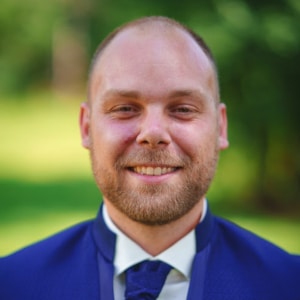

Ned Dervenkov
Vice-chairman of Board BESCO

Ned Dervenkov
Ned Dervenkov is Vice-chairman of Board at BESCO – the Bulgarian Startup Association. Ned has been involved in the Bulgarian startup community for quite some years now, has launched his own startups, failed and launched again. Besides BESCO, Ned is also involved in a proptech business.
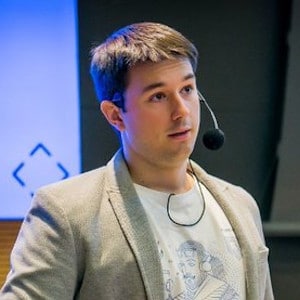

Marcin Moskała
Kt.Academy

Marcin Moskała
Marcin Moskala is an experienced Android developer, teacher, and an official Jetbrains’ Kotlin training partner. He is the founder of Kt. Academy, author of the book “Android Development with Kotlin”, and an active programming community member. He is also the main author on the biggest medium publication about Kotlin and a speaker invited to many programming conferences.
Kotlin not-to-do list
Kotlin gives us a lot of possibilities, but with every power comes responsibility. What should we avoid doing in Kotlin? What are Kotlin internal contracts in terms of different features and functions? What is dangerous and should be avoided? How to code responsively?
Your first multiplatform Kotlin application
Learn how to make your first truly multiplatform project and explore how much these capabilities can save you time and effort during everyday work. During this presentation, we will take a step-by-step approach, and by exploring what needs to be done to make more and more advanced usage possibilities, we will discover how to start and how to operate on multiplatform Kotlin projects.
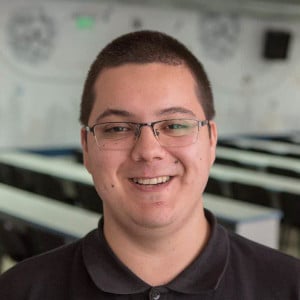

Nikolay Angelov
Nexo

Nikolay Angelov
Nikolay Angelov got into coding in early 2007 when he wrote his first mIRC script. He realized his love for coding and jumped into Web Programming. He continued to work in the field for 8 years and gained experience with various languages, for example, PHP, JavaScript, and MySQL. He then took a short break from programming to work on personal projects. A year ago, Nikolay re-discovered his passion for programming while taking a course about Blockchain. He is now a Blockchain Trainer and a Blockchain Developer. His passions are everything Blockchain, Solidity, C++, Vim and Blogging. Nikolay has a Personal Blog where you can read about topics that interest him: http://nikolaytech.com
Achieving Privacy in Public Blockchains
In the recent years we started understanding more and more why our Privacy is important and we need to start thinking about how we can achieve Privacy in the Public Blockchains so they can get more adoption.
In this talk we will see how this is possible and how we can use cleaver cryptography to achieve Confidential transactions and Data Privacy in Public Blockchains
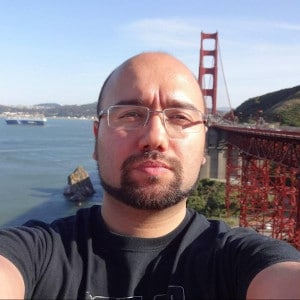

Tihomir Mateev
VMware Bulgaria

Tihomir Mateev
Tihomir has more than 10 years of experience developing web applications, the last 6 of them working on user interfaces for VMware’s vSphere suite. He is currently a part of the team that is transforming the extensibility model of the suite and the way third party plugins are loaded, authenticated and isolated.
Microfrontends in practice
Contemporary applications often employ the usage of distributed services that work together to allow complex workflows.
The notion of many services with different lifecycles and different availability poses great challenges to a centralized user interface.
What should the design of such front end be? How should it stitch up the different pieces together?
How would it react to change and downtime for each service individually and for the bulk of them?
This presentation aims to give a quick overview of what micro frontends are and how they are applied in various applications like Facebook, Spotify and such as the VMware’s vSphere Suite.
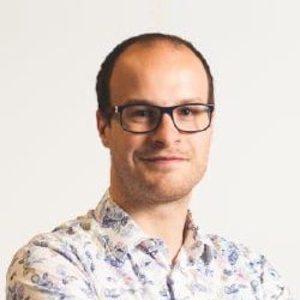

Simon Stone
IBM

Simon Stone
Simon Stone is currently the lead engineer for the IBM Blockchain Platform developer experience team based in Hursley, UK. His main focus is on building APIs, SDKs, and developer tools that blockchain developers can use to build smart contracts and applications on their journey to disrupting industries and enhancing the way businesses work together. He is a regular contributor to open source software under the Linux Foundation’s Hyperledger project, and a maintainer for Hyperledger Fabric.
Building smart contracts and applications with Hyperledger Fabric
Hyperledger Fabric is a permissioned blockchain technology where developers can build smart contracts, and applications that interact with deployed smart contracts. Smart contracts and applications can be developed in a range of programming languages, including Go, Java, and JavaScript, allowing developers to easily get started with this technology by taking advantage of their existing skills.
In this talk, you will learn the basics of smart contract development. You will learn how to build your first smart contract, how to write a transaction function, and how to interact with the ledger using the available APIs.
You will also learn the basics of application development. You will learn how to build your first application by using a connection profile and a wallet/identity to connect to a gateway peer, and how to submit a transaction to a smart contract.
Developers already familiar with Hyperledger Fabric will be able to learn about the significant enhancements that we’ve been delivering to the smart contract and application programming model since Hyperledger Fabric v1.4, including an update on our current plans.
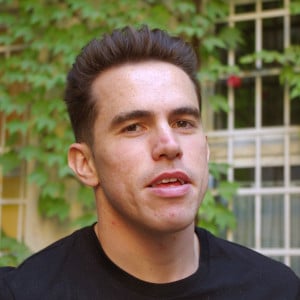

Thomas Metcalfe
Chattermill

Thomas Metcalfe
Physics master’s graduate, machine learning engineer and total word nerd.
Transformers: how machines have learned context
Keywords have been timelessly important in natural language processing. However, over the past 10 years we have made vast improvements in the field by leveraging not just the words, but the context in which they are found. Subsequently, there has been a significant shift in the way machines understand the underlying meaning in language. This talk will cover the history of approaches to context encoding, with a particular highlight on the most recent innovation: the transformer. We showcase how this state-of-the-art technique allows us at Chattermill to gain insight from customer feedback and uncover what decisions will drive the greatest impact.


Shenol Mustafov
e Foundation

Shenol Mustafov
I have strong interest in privacy and I’ve been following the area for a couple of years. Since 2018 I’m working as communication assistant in e Foundation. Prior to that I’ve worked on Windows server related projects at HP Bulgaria. I have studied computer science and Business Administration and I have diverse interests including Philosophy, Artificial Intelligence and Bitcoin.
/e/ – Android without Google
We are living in the era of mass surveillance and monetization of personal data by big companies. Convenience of using a mobile phone and personal data privacy can be hard to achieve at the same time. At e Foundation we are creating a privacy-enabled mobile OS ecosystem, free of Google surveillance. We are leveraging open source and community support to create an easy to use mobile OS, designed with privacy in mind.
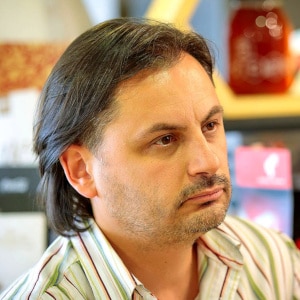

Neven Boyanov
Programmers’ Club in Veliko Tarnovo

Neven Boyanov
Irrepressible startup enthusiast, entrepreneur, lecturer, activist at the Programmer’s Club in Veliko Tarnovo. Started in 2013 the Tinusaur Project – an educational platform for learning electronics, robotics and programming. Co-founded in 2007 Interlecta, a product company with offices in Bulgaria and in US that develops products in the field of telemedicine.
Изграждане на общност, която да създава нови продукти и да стартира бизнеси
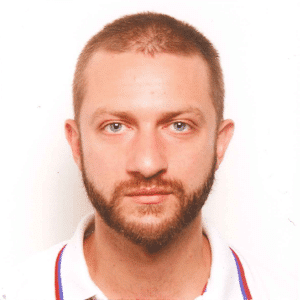

Stefan Kiryazov
Church of the Flying Spaghetti Monster

Stefan Kiryazov
Stefan, like most geeks, rejected the faith of his parents early in his childhood. Later in life, however, he missed the community support and sense of purpose that religious people enjoy – until he found Pastafarianism.
He converted to his new faith in 2009 and has spearheaded the Bulgarian branch of the church ever since. In 2016 Stefan and his now wife became the first couple in Bulgaria (and only 2nd in the world) to have a Pastafarian wedding ceremony, a rite they now recommend for everyone who finds the traditional church wedding boring and misogynistic.
“Говори ми в цифри” или колко е важно да боравим с измерими величини когато се опитваме да решаваме социални проблеми
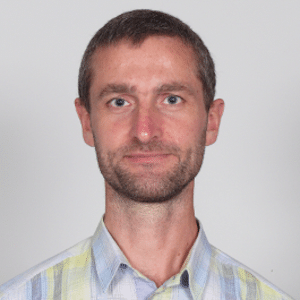

Trayan Iliev
IPT – Intellectual Products & Technologies

Trayan Iliev
Trayan Iliev (https://www.linkedin.com/in/trayaniliev/) is developer of end-to-end reactive full-stack applications and services using ES, TypeScript, Angular, React and Vue.js clients, and Spring 5, Reactor, Kafka, Pulsar, RabbitMQ, Express and Java EE back-ends. He has 15+ years of software development experience and 12+ years experience as enterprise IT trainer. Trayan is CTO of IPT – Intellectual Products & Technologies – training and consultancy company, focused on novelties in front-end and REST/gRPC/GraphQL backend development – reactive UI, end-to-end reactive programming, distributed event stream processing, real-time micro-service architectures, etc. Trayan has presentations on local developer conferences such as Voxxed Days, jPrime, jProfessionals, BGOUG, on topics like Spring 5, Reactor, SOA & REST, CDI, Java EE, React, Angular, Ionic, Node.js, RxJS, reactive java robotics, high-performance java. He is robotics / smart-things/ IoT enthusiast and organizes RoboLearn hackathons in Sofia.
Distributed Pub-Sub Messaging and Logging beyond Kafka with Apache Pulsar
Apache Pulsar is an enterprise grade distributed pub-sub messaging platform, with a very flexible messaging model and an intuitive client API. It was initially developed by Yahoo and currently powers major Yahoo applications like Yahoo Mail, Finance, and Sports. It combines capabilities of a horizontally scalable distributed pub-pub messaging system (like RabbitMQ, ActiveMQ, ZeroMq, etc.), with that of persistent logging platform like Apache Kafka. The presentation introduces to Apache Pulsar and its major features:
- horizontal scalability (millions of topics and millions of messages per second)
- strong ordering and consistency guarantees
- low latency durable storage
- load balancing
- multi-tenancy
- authentication and authorization
- quotas
- supporting mix of very different workloads
- optional hardware isolation
- REST API for provisioning, admin and stats
- geo replication
- transparent partitioning
- transparent message batching
Presentation finishes with a comparison between Kafka and Pulsar and a short demo.


Venelin Nikolov
QWERTY

Venelin Nikolov
Venelin Nikolov is a lecturer in Informatics and Information Technology at Vasil Levski Primary School in Razgrad. His professional career as an ICT teacher began at Nikola Economov Primary School in the city, where in 2009 she created the first virtual classroom in Bulgaria with 32 physical devices for teacher’s and students’ work. This innovation brings him the Teacher of the Year award and a meeting with the President of the Republic of Bulgaria on the occasion of May 24th.
Our robotics club is a town team. It is five years old, with kids from the first to twelfth grade. A student from the sixth grade invented the name of the team while watching the keyboard of the computer. These are the first letters of the left upper part of the keyboard. We gather together twice a week and work in groups. We do LEGO-robotics. We first construct robots and after that we program them for specific tasks and missions to help people. During the meetings we work and have fun. We often play team games or compete with the robots that we constructed. Once a month we organize sumo fights. On celebrations we take part with our robots. We like to show the constructed by us mechanisms and the programmes to students from our and other schools. It happens when our school celebrates.
Роботиката в учебния процес
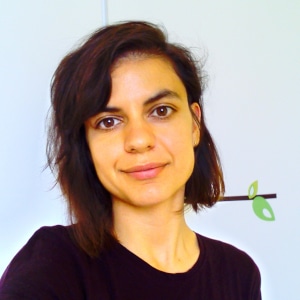

Tanya Kozalieva
Kinder Coder

Tanya Kozalieva
Co-founder in Kinder Coder. Kinder Coder is a small programming club for kids, created and developed with great passion by a young couple. They explore and develop creative ways to ensure conditions for children to make their first steps in the world of coding in an easy and funny way. Through local workshops, courses and trainings in robotics Kinder Coder is provoking kids interest and passion for digital skills. The club is located in a small town and its founders are focused on developing their activity in small cities where programming for kids is not popular and often even impossible.
Kinder Coder – the story behind it. If you can imagine it, you can also build it
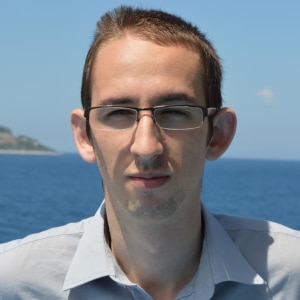

Gyuner Zeki
DostaviTuk

Gyuner Zeki
In the last few years he was a Technical Lead, Manager of Software Development and had other similar roles. He co-founded DostaviTuk and SuperSecure.
Email (email solution for SMEs) and contributed to open source community via his open source project EasyMail at GitHub. Gyuner’s work involves creating Architectural solutions, Proof of Concepts (PoC) and leading teams towards achieving goals.
Despite his young age of 27, he has been in the IT industry for more than 10 years. He completed studying Informatics at Plovdiv university “Paisii Hilendarski”.
He is a professional lecturer and has trained more than 100 students in programming both in classrooms groups and one on one.
Instant delivery right here


Taniyana Georgieva
Organizational Leader ABLE

Taniyana Georgieva
Taniyana Georgieva is an Organizational Leader at Association of the Bulgarian Leaders and Entrepreneurs (ABLE)
– an active community of over 300 young professionals and entrepreneurs who develop projects with main focus on leadership and entrepreneurship which are driving the positive change in Bulgaria. Their portfolio includes a mentorship program for high-school students, an early stage entrepreneurship program for university students and young professionals, a course in doing business for real-economy businesses, a startup competition awarding the best startups and ecosystem players in Bulgaria each year.
Taniyana is a Psychology graduate with specialization in Organizational Psychology and a master of Psychological Counseling. She is a certified coach from the American Institution “Quantum Success Coaching Academy” and for the past 5 years has been doing professional coaching for different NGOs in Bulgaria and abroad. The last 2 years her experience spreads in the fields of Human Resource Management
and Project Management before taking the role of community manager of ABLE. Over all she has 9 years of volunteering experience in the NGO sector being on various leadership positions working on fundraising, event management, marketing and raising awareness on important topics as a whole.
Particularly passionate about mental health and fulfillment of humankind’s potential, Taniyana has been actively working and advocating for building healthy, encouraging and productive organizational cultures where employees feel happy and motivated to grow professionally in their particular company or organization. By this solving the problems with high turnover, disengagement of employees, bad or lacking onboarding and so many more.
ABLE Activator – the ultimate entrepreneurship program in Bulgariа
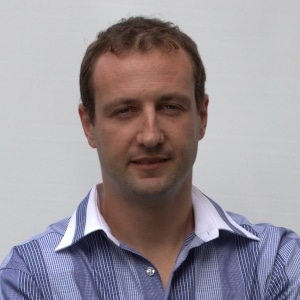

Viktor Balabanov
Znam.be

Viktor Balabanov
Тесен специалист в сферата на soft skills тренинги с повече от 11 години практическият опит в работата с над 60 компании в България и в страните на Балканския полуостров. Образованието, лицензите и сертификатите му го поставят сред най-стойностните специалисти в областта на обученията в бизнеса. Понастоящем: управител на I can be … и създател на продуктите на Znam.be
Играя, уча и умея – как да уча, за да мога, без да се страхувам, че ще сбъркам
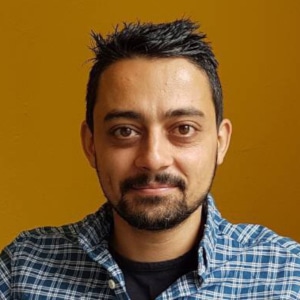

Pavel Tashev
StartupStage

Pavel Tashev
Уеб разработчик и предприемач. Разработил платоформите Schoodle свързаща учители и родители през Интернет, QRL (bit.ly за QR кодове), Peoplegogo (Crowdfunding платформа за благотворителни дейности) и StartupStage (мрежа от предприемачи и Startup-и, помагащи на други Startup-и да развият своята бизнес концепция).
Представяне на StartupStage


George Petrov
FuseМotion

George Petrov
Co-founders George Petrov and Ivan Shopov embark on the shared quest of “accelerating the world’s transition to electric vehicles” by designing a more engaging and inspiring driving experience. FuseMotion’s first product is designed for our auditory senses. Visit us and experience the sound of the future of mobility.
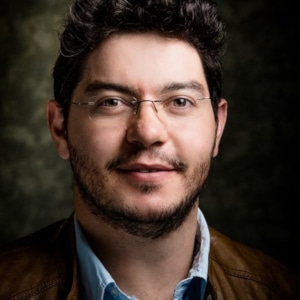

Emil Shekerdzhiiski
Networking Premium

Emil Shekerdzhiiski
Emil is an entrepreneur, teacher and “to the moon” cabin crew recruiter. He has been in the 9-5 business for a few years, learning teamwork, developing management skills and understanding how business works. “I never left my job, without being sure of my next adventure will yield and become sustainable. But when it happened I knew I was ready to leave my job. Drastic changes in life should be made slowly.”
Kак се е зародила идеята за NETWORKING Premium и как е вдъхновила екипа и членовете му


Yanko Iliev
Cherryz

Yanko Iliev
В Cherryz.work няма отворени пространства, а само отделни офиси. Това помага на стартиращите екипи да се концентрират и развиват. Ето защо, Cherryz.work има потенциала да се превърне в твоето ново работно място.
Coworking is dead Alive


Irina Seliktar
#SwiftSofia & #Spodari

Irina Seliktar
Hi to all Swift Enthusiasts in Bulgaria. Let’s start the talk on Swift. It’s been around for a while and the community is there, eager to meet and share experience.
We will do meetups every month to discuss and discover the variety of functionalities of Swift. The meetups won’t be so much of sit & listen type of conference,
but rather practical hands on sessions.
#SpoDari (от спортувай и дарявай) е идеята ни за това как можем да съчетаем спорт и добра кауза. Всички имаме нужда да се движим и спортуваме.
Движението ни зарежда, движението ни мотивира, движението ни прави по-усмихнати и позитивни. А ако работното и домашното ни ежедневие
не ни раздвижват достатъчно, трябва да се постараем, за да сме жизнени и здрави.
Инициативи SpoDari и SwiftSofia – как и защо да се включиш
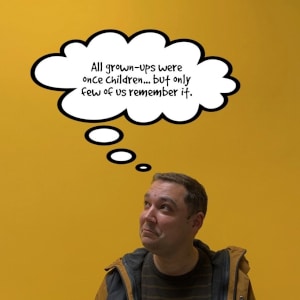

Nayden Gochev
BG JUG

Nayden Gochev
The Bulgarian Java User group was founded in September 2007 along with a mailing list for discussion
of any Java-related questions, problems and upcoming technologies. After a short period of dormancy,
five members set leadership board in 2013. It triggered regular meetups and sessions once or twice a
month with local and foreign speakers. The JUG first took part in several Adopt OpenJDK activities and
soon after that became JCP member. The events and workshops organized by the community are
sponsored and backed up by IT companies on the Bulgarian market
Bulgarian Java User group: past, present and future
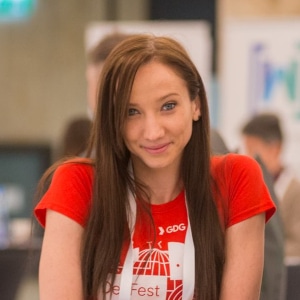

Marchela Mincheva
GDG

Marchela Mincheva
GDG Sofia is а group of enthusiasts that gather around Google technologies. We organize different events – seminars, conferences or just dine outs, and discuss the latests developments.
GDG Initiatives and What Comes Next


Vasilena Vasileva
Women Who Code

Vasilena Vasileva
Василена Василева е част от екипа на DEV.BG – най-голямата ИТ общност в България и активен член на Women Who Code – Sofia! Организатор на събития по професия и доброволец по душа.
Women Who Code Sofia е българският клон на женската общност, чиято цел е да вдъхновява и подкрепя жени в тяхното развитие в технологичен и социален аспект.
Инициативната започва преди 3 години като част от международната общност “Women Who Code”, присъстваща в повечето страни в света.
В момента Women Who Code Sofia е най-разпознаваемата женска организация в IT сектора, която организира всеки месец събития с различна тематика.
По време на презентацията ще разберете какво предстои на организацията през 2020 г. и кои са новите предизвикателства пред тях.


